This work brings algebraic magic and semi-magic squares of orders 4, 6, 8 and 10 for reduced entries. By reduced or less entries, we understand that instead of normal n2 entries of a magic square order n, we are using less numbers. Moreover, in these situations the entries are no more sequential numbers. These entries are non-sequential positive and negative numbers. In some cases, these may be decimal or ractional values depending on the orders of magic squares. In this work we bring different ways of writing magic and semi-magic squares of orders 4, 6, 8 and 10. These are based on three types of magic squares, i.e., cornered, single-digit bordered and double-digit bordered magic squares. except for the magic square of order 4. In all orders we constructed pandiagonal magic squares for reduced entries. It is not necessary, but we worked with magic rectangles with equal widths and lengths of the same category within a magic square. Previously, the author brought similar kind of work for the orders 3 to 12 specially for the for the dates and days of the year 2025, where the dates are few entries and days are the sums of magic squares. For this kind of work refer the first part of the reference list given below. This work we work is revised and enlarged version of previous works.
For more details see the link given below:
Inder J. Taneja – Reduced Entries Magic and Semi-Magic Squares of Orders 4, 6, 8 and 10, Zenodo, July 05, 2025, pp. 1-85, https://doi.org/10.5281/zenodo.15814675.
Summary of the work is given below for each order of magic squares
Reduced Entries Algebraic Magic Squares of Order 6
Result 1: Magic Square of Order 4
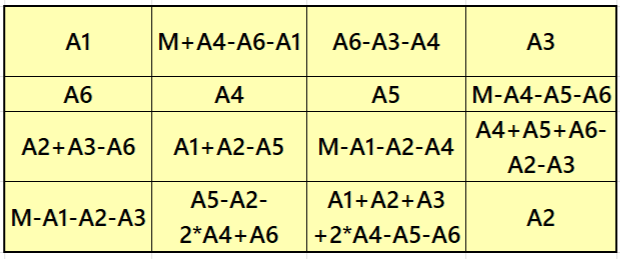
It is magic square of order 4. It can be seen in F. Gaspalou’s webs-site http://www.gaspalou.fr/magic-squares/. Below are two examples with even and odd number magic sums:

Result 2: Pandiagonal Magic Square of Order 4

It is a pandiagonal magic square of order 4. In this case the magic sum should be multiple of 2 otherwise we get fractional values. It can also be een in F. Gaspalou’s web-site http://www.gaspalou.fr/magic-squares/. Below are two examples with even and odd number magic sums:

Reduced Entries Algebraic Magic Squares of Order 6
Below are few results giving algebraic magic squares of order 6 based on reduced entries.
Result 1: Cornered Magic Square
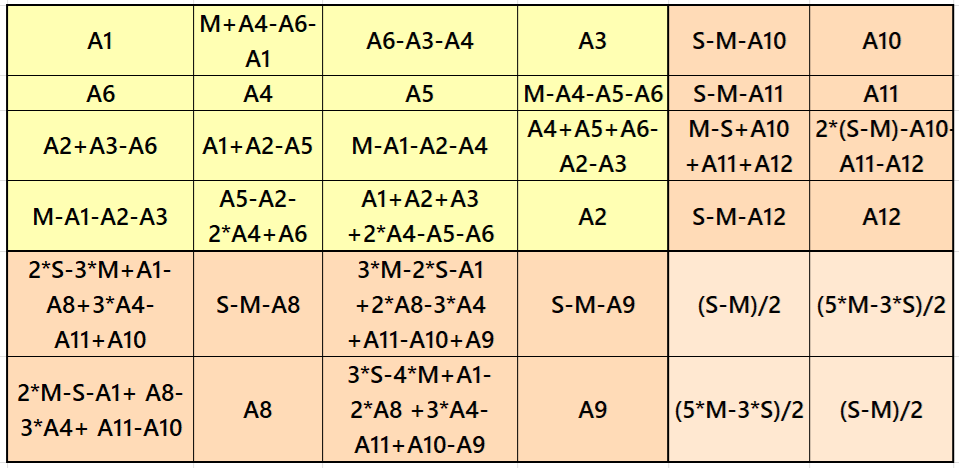
It is a cornered magic square of order 6 having magic square of order 4 at upper-left corner. The two magic rectangles of orders 2×4 are of equal width and length. The letters M and S represents the magic squares of orders 4 and 6 respectively. In order to avoid decimal entries, the magic sums M and S should be of same type, i.e., either even or odd numbers.
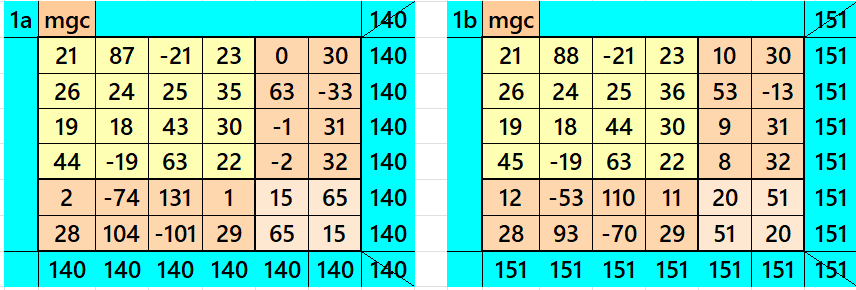
Result 2: Normal Magic Square
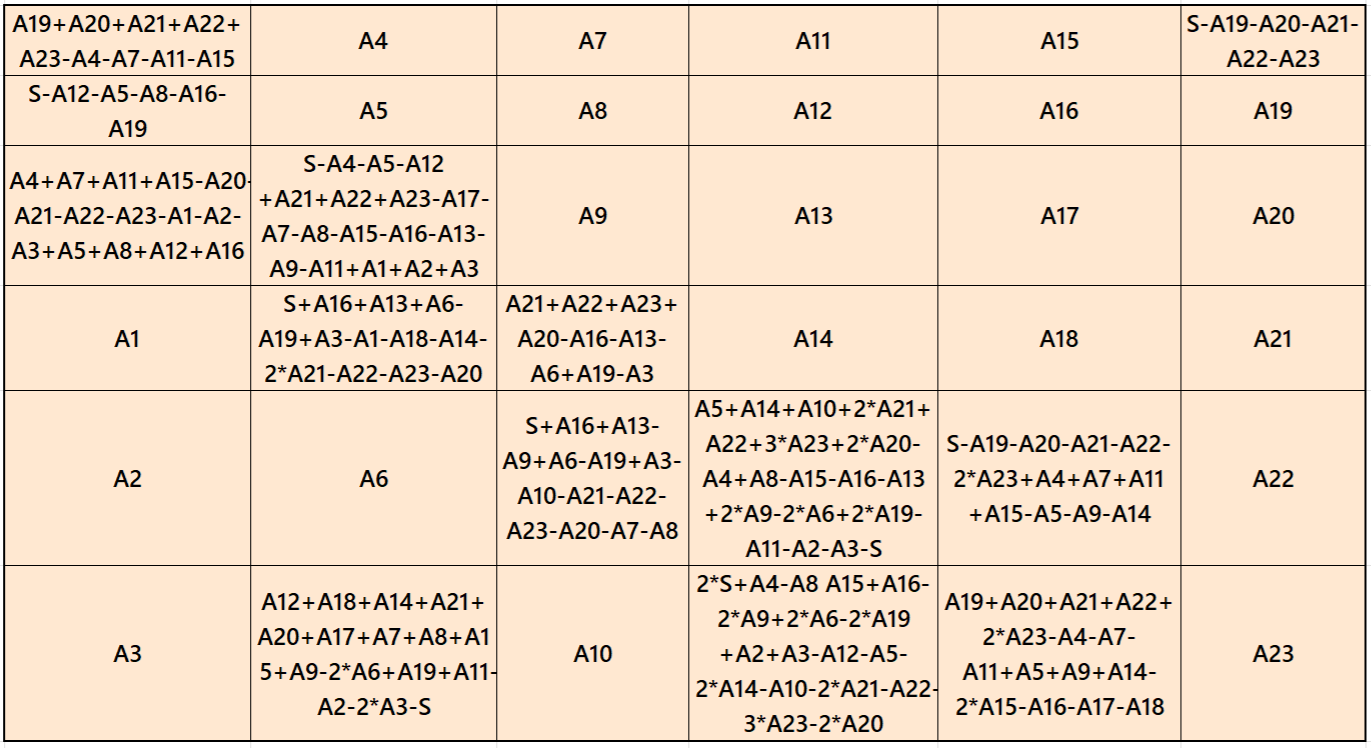
It is an algebraic magic square of order 6. The letter S represents sum of a magic square of order 6. See below two examples with even and odd magic sums:

Result 3: Pandiagonal Magic Square
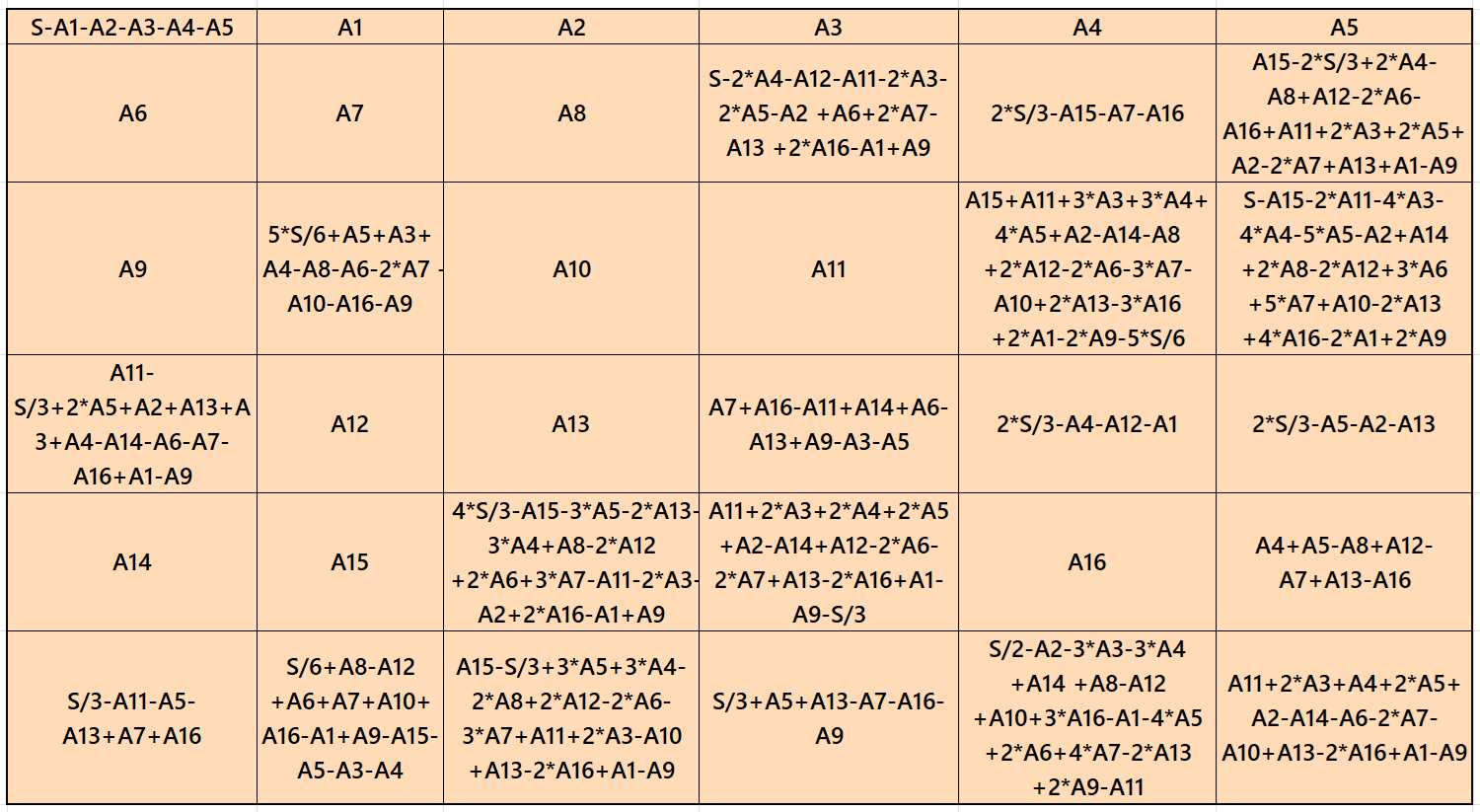
It is a pandiagonal magic square of order 6. The letter S represent the magic sum of order 6. In order to get non-decimal entries, the magic sum should be multiple of 6. If the entries in a magic square of order 6 are sequential numbers, then it is impossible to get pandiagonal magic square. In this case the entries are non-sequential type. See below two examples:

Result 4: Pandiagonal Magic Square
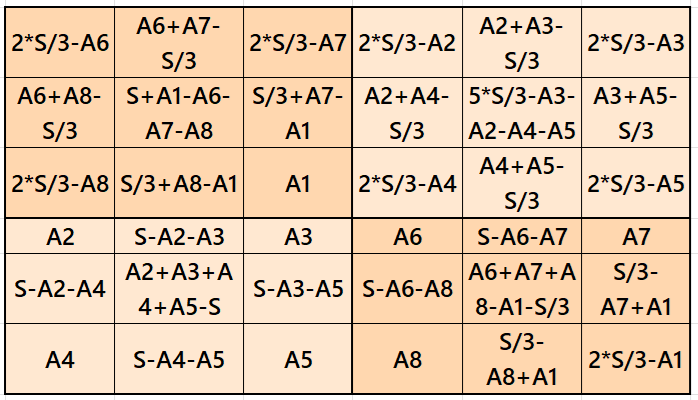
It is a pandiagonal magic square of order 6. The letter S represent the semi-magic sum of order 3. In order to get non-decimal entries, the magic sum of order 6 should be multiple of 6. If the entries in a magic square of order 6 are sequential numbers, then it is impossible to get pandiagonal magic square. In this case the entries are non sequential. See an example below.
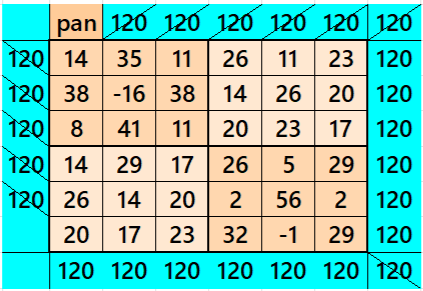
Result 5: Sem-Magic Square
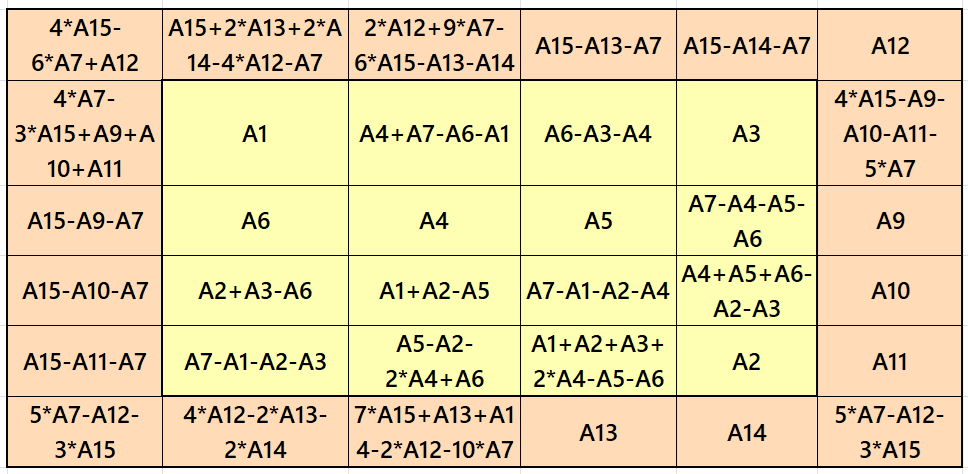
It is a single-digit bordered semi-magic square of order 6 embedded witha magic square of orders 4. It is semi-magic only at one diagonal. In order to bring it as a magic square we need a condition M=(2/3)*S, where M and S are magic sums of magic squares of orders 4 and 6 respectively. Here M=A7 and S=A15. See below two examples with semi-magic and magic squares of order 6:
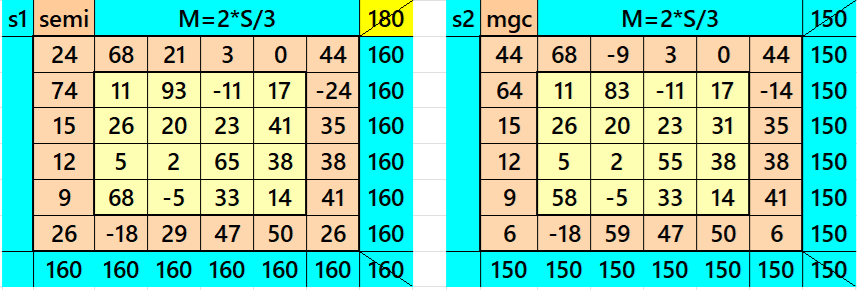
Reduced Entries Algebraic Magic Squares of Order 8
Below are few results giving algebraic magic squares of order 8 based on reduced entries.
Part 1: Reduced Entries Magic Squares of Order 8
Result 1: Four Equal Sums Magic Squares of Order 4
It is a magic square of order 8 composed with four equal sums magic squares of order 4. The letters M and T represents the magic squares of orders 4 and 8 respectively. In this case we have T:=2*M, where M is the magic sum of order 4. In this case what ever integer value of M we choose, the magic sum is always an even numbers. See below two examples.
Result 2: Double-Digit Bordered Magic Square
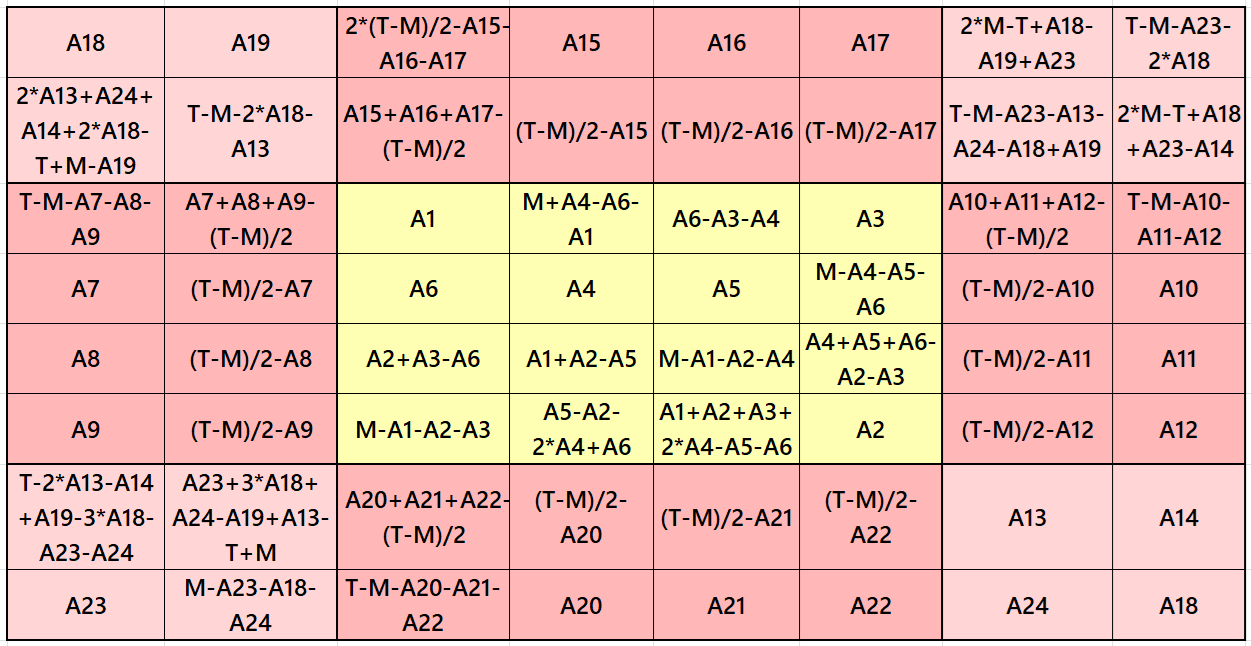
It is a double-digit bordered magic square of order 8 embedded a magic square of order 4. The four magic rectangles of orders 2×4 are of equal width and length. The letters M and T represents the magic squares of orders 4 and 8 respectively. In order to avoid decimal entries, the magic sums M and T should be of same type, i.e., either even or odd numbers. See below two examples with even and odd numbers magic sums:

Result 3: Cornered Magic Square
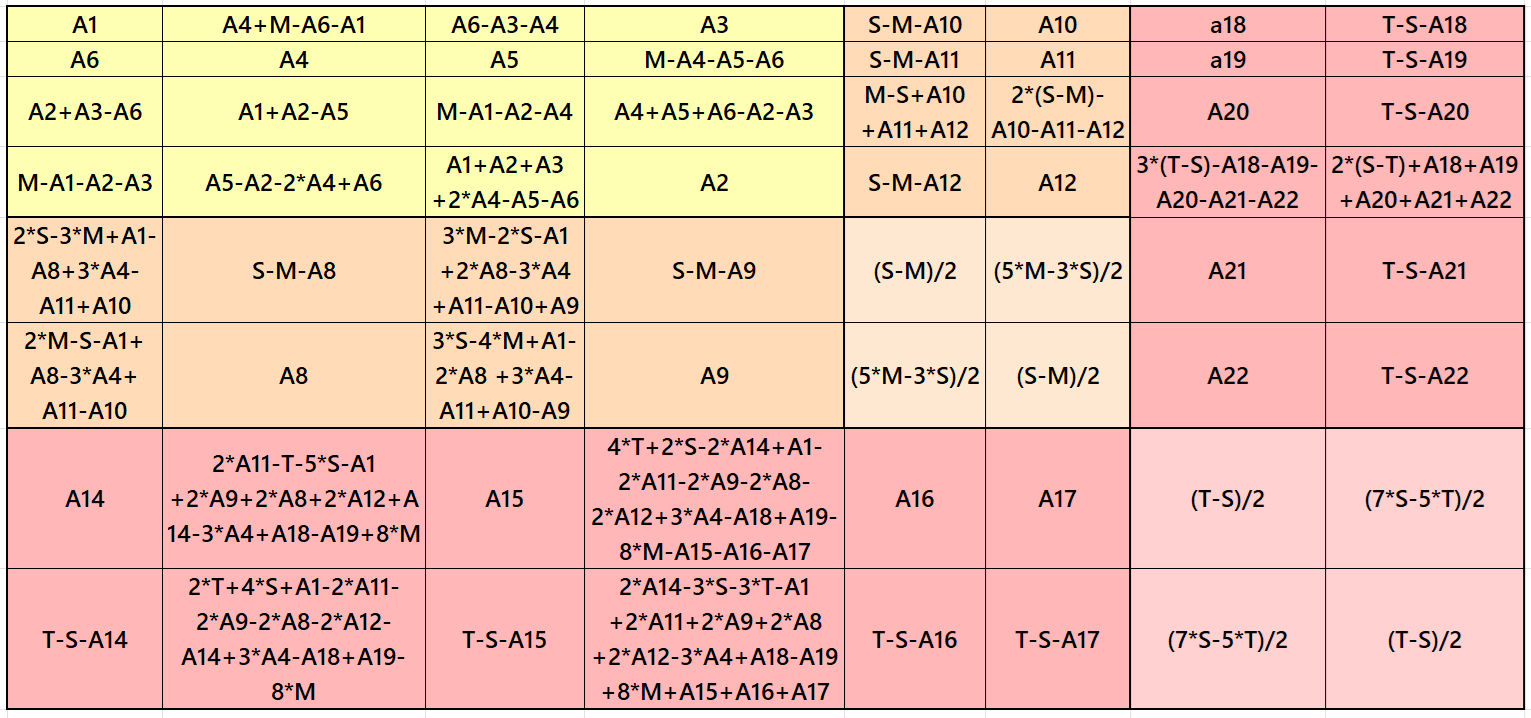
It is a cornered magic square of order. The magic rectangles of orders 2×4 and 2×6 are of equal width and length in each case. The letters M, S and T represents the magic squares of orders 4, 6 and 8 respectively. In order to avoid decimal entries, the magic sums M, S and T should be of same type, i.e., either even or odd numbers. Below are two examples with even and odd numbers magic sums:

Result 4: Cornered Magic Square
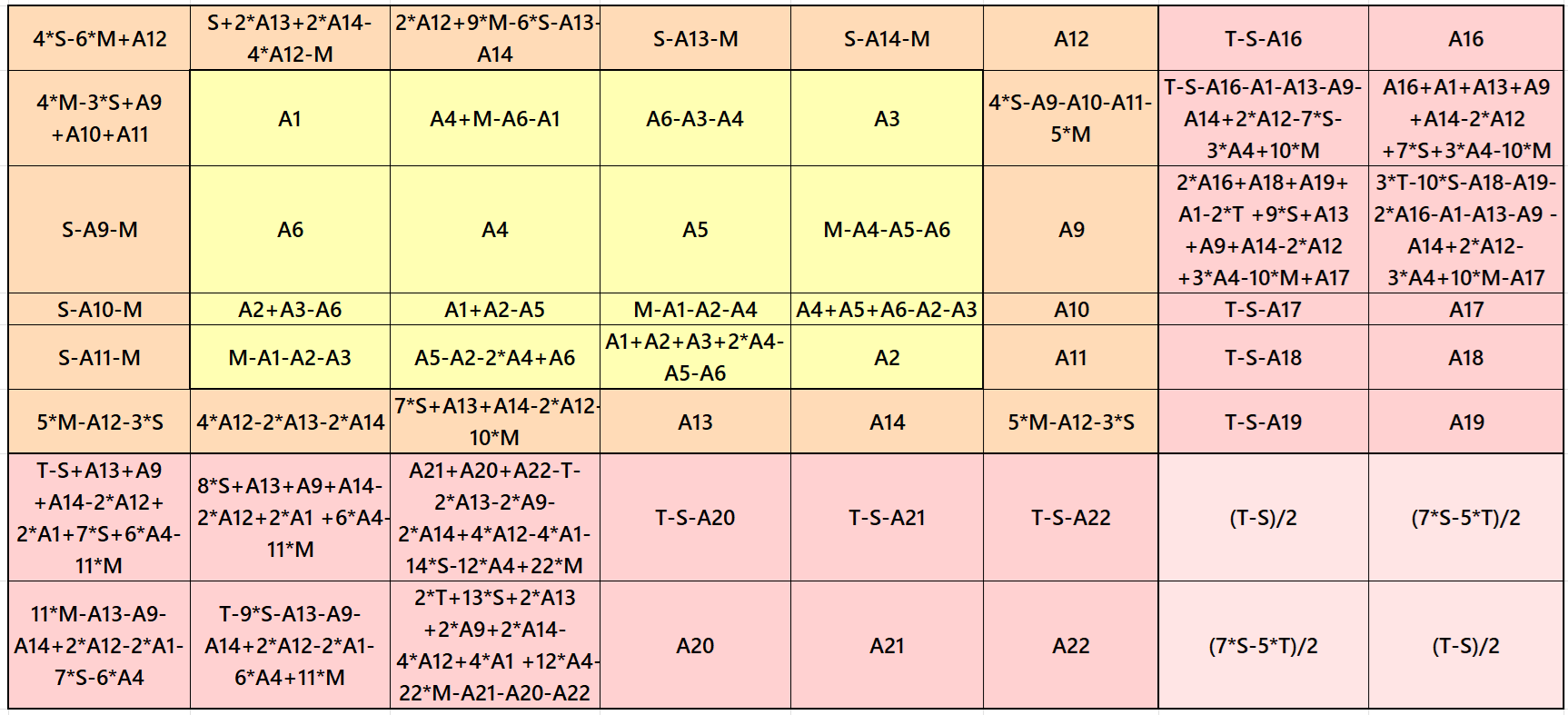
It is a cornered magic square of order embedded with a single-digit bordered magic square of order 6. It has magic square of order 4 as an inner part. The magic rectangles of orders 2×6 are of equal width and length. The letters M, S and T represents the magic squares of orders 4, 6 and 8 respectively. In order to avoid decimal entries, the magic sums M, S and T should be of same type, i.e., either even or odd numbers. Below are two examples with even and odd numbers magic sums:

Result 5: Cornered Magic Square
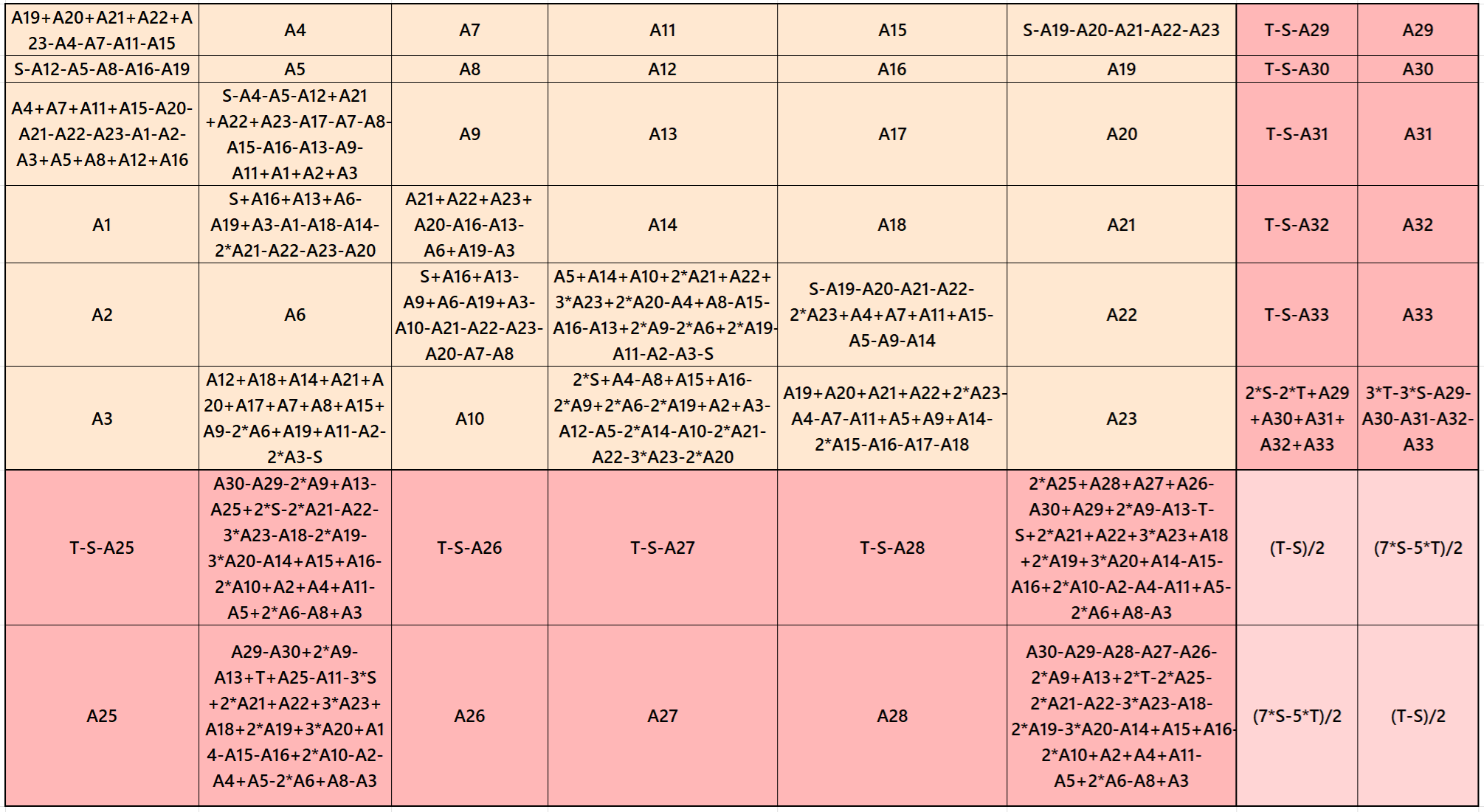
It is a cornered magic square of order embedded with a magic square of order 6. The magic rectangles of orders 2×6 are of equal width and length. The letters S and T represents the magic squares of orders 6 and 8 respectively. In order to avoid decimal entries, the magic sums S and T should be of same type, i.e., either even or odd numbers. Below are two examples with even and odd numbers magic sums:

Part 2: Reduced Entries Striped Magic Squares of Order 8
Result 6: Striped Magic Square
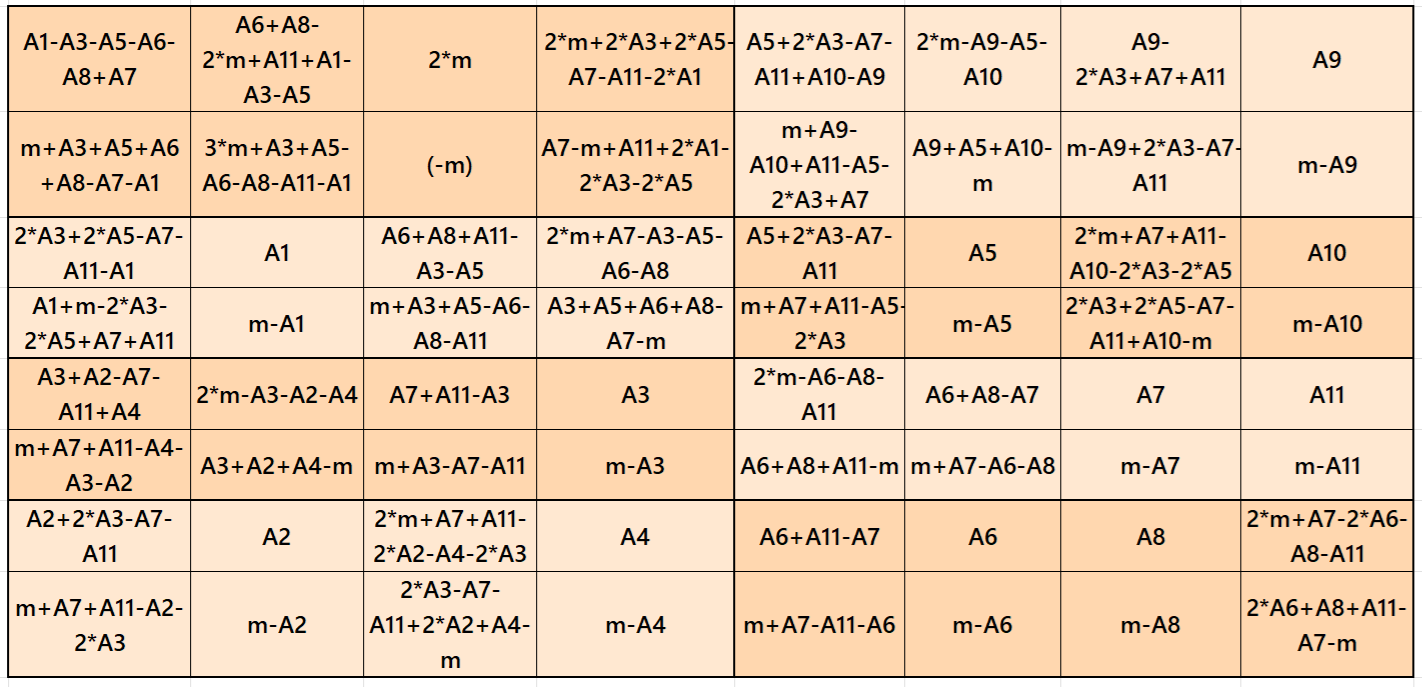
It is a striped magic square of order 8 where the magic rectangles of order 2×4 are of equal width and length, i.e., mx2m. In this case the magic sum of order 8 is T=2m. It includes five magic squares of order 4 also. These are specified in an example below:
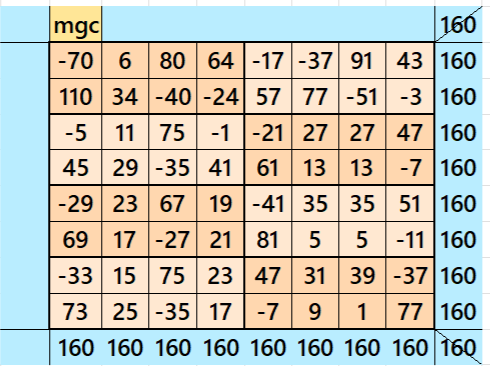
The magic square sum is T=160 and each magic rectangle of order 2×4 is with magic sum 40×80. It c contains five magic squares as given below:
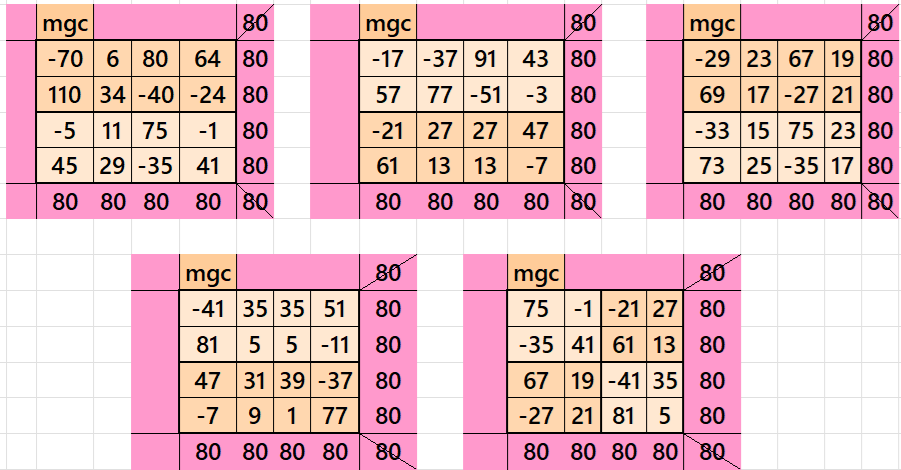
Result 7: Cornered Magic Square

It is a cornered magic square of order 8 embedded with a magic square of order 6. The magic square of order 6 is composed of four equal sums semi-magic squares of order 3. The magic rectangles of orders 2×6 are of equal width and length. The letters T, S and M represents the magic squares of orders 8, 6 and 3 respectively. In order to avoid decimal entries, the magic sums S and T should be even numbers as S:=2* M. See below two examples:

Result 8: Cornered Magic Square

It is a cornered magic square of order embedded with a magic square of order 6. This magic square of order 6 is composed of three magic rectanles of order m×3m, where m is the width of the magic rectangles. The external rmagic rectangles of order 2×6 are of equal width and length but not necessarily same as of magic square of order 6. The letters S and T represents the magic squares of orders 6 and 8 respectively. See below two examples:
Part 3: Reduced Entries Semi-Magic Squares of Order 8
Result 9: Single-Digit Bordered Semi-Magic Square
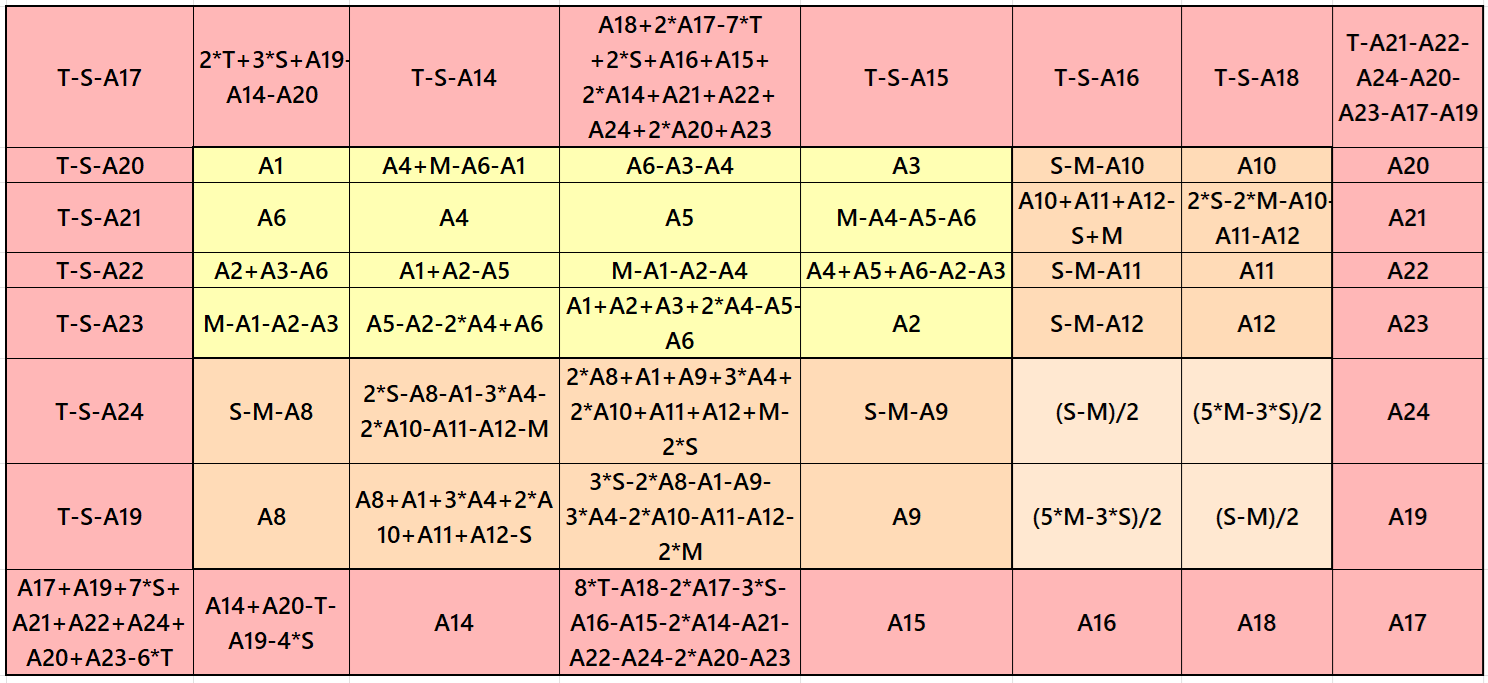
It is a single-digit bordered semi-magic square of order 8 embedded with cornered magic squares of orders 6. It is semi-magic only at one diagonal. In order to bring it as a magic square we need the condition S=(3/4)*T, where S and T are magic sums of magic squares of orders 6 and 8 respectively. See below two examples with semi-magic and magic sums:

Result 10: Single-Digit Bordered Semi-Magic Square
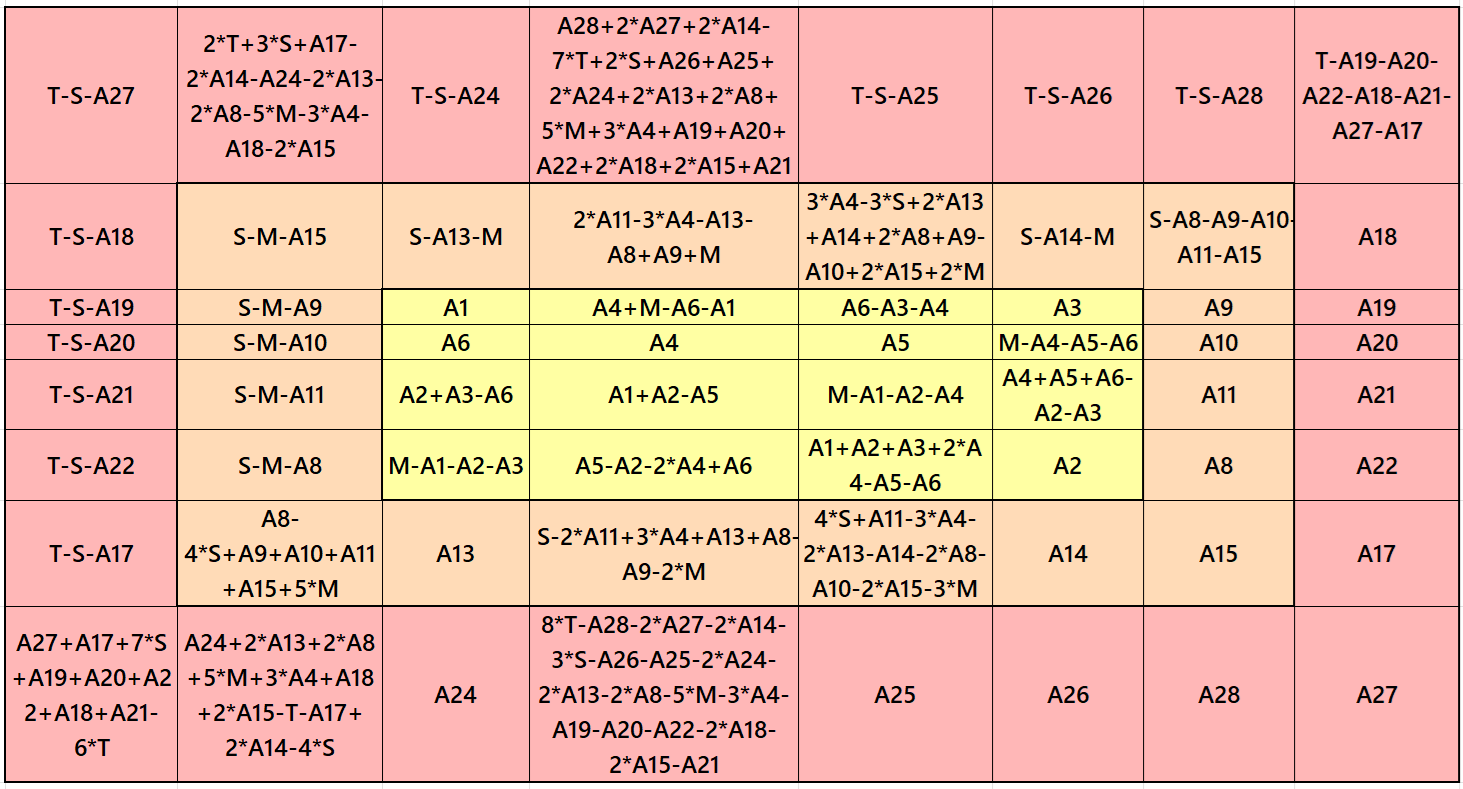
It is a single-digit bordered semi-magic square of order 8 embedded with single-digit bordered semi-magic square of order 6. It is semi-magic only at one diagonal. In order to bring it as a magic square we need the conditions, M=(2/3)*S and S=(3/4)*T, where M, S and T are magic sums of magic squares of orders 4, 6 and 8 respectively. See below two examples with semi-magic and magic sums:

Result 11: Single-Digit Bordered Semi-Magic Square
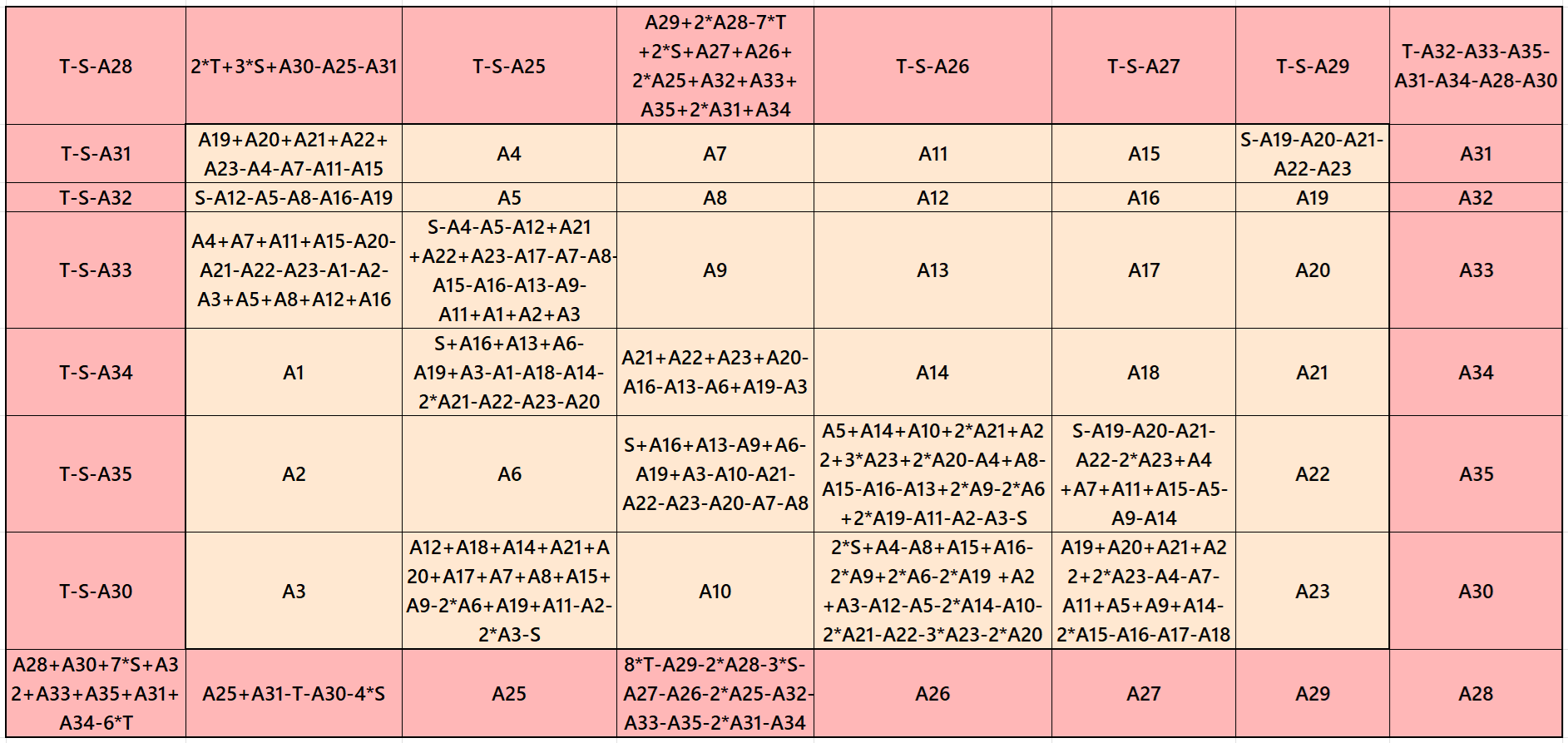
It is a single-digit bordered semi-magic square of order 8 embedded with a magic square of order 6. I It is semi-magic only at one diagonal. In order to bring it as a magic square we need a condition S=(3/4)*T, where S and T are magic sums of magic squares of orders 6 and 8 respectively. See below two examples with semi-magic and magic sums:

Result 12: Single-Digit Bordered Semi-Magic Square

It is a single-digit bordered semi-magic square of order 8 embedded with a magic square of order 6. This magic square of order 6 is composed of 4 equal sums semi-magic squares of order 3. In order to bring it as a magic square we need a condition S=(3/4)*T, where S and T are magic sums of magic squares of orders 6 and 8 respectively. The magic sum of order 6 is S:=2* M, where M is the semi-magic sum of order 3. See below two examples:
Result 12: Single-Digit Bordered Semi-Magic Square
It is a single-digit bordered semi-magic square of order 8 embedded with a magic square of order 6. This magic square of order 6 is composed of 3 equal sums magic rectangles of order m×3m. In order to bring it as a magic square we need a condition S:=2* M, where S and T are magic sums of magic squares of orders 6 and 8 respectively.
Reduced Entries Algebraic Magic Squares of Order 10
Below are few results giving algebraic magic squares of order 10 based on reduced entries.
Part 1: Reduced Entries Magic Squares of Order 10
Result 1: Double-Digit Bordered Magic Square
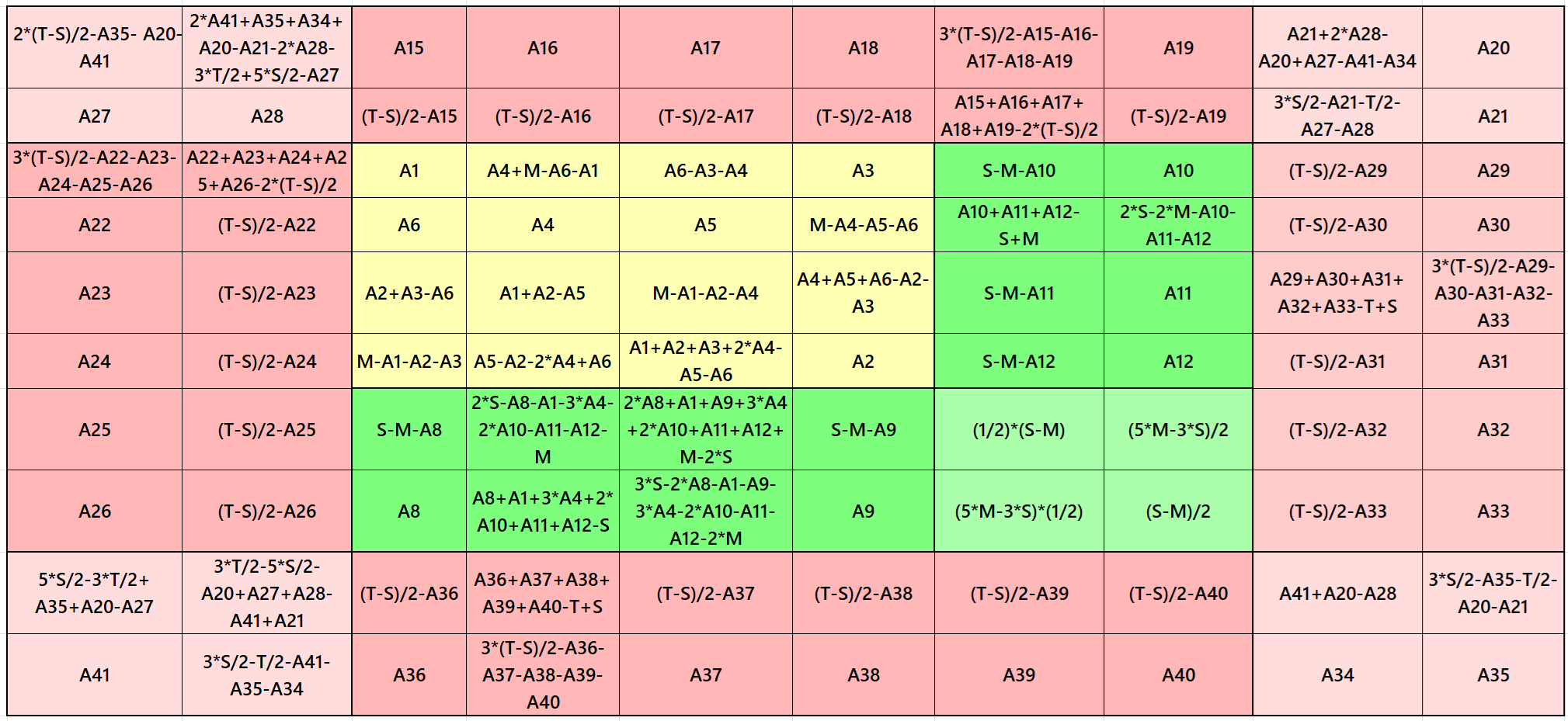
It is a double-digit bordered magic square of order 10 embedded with a cornered magic square of order 6 having magic square of order 4 at the upper-left corner. The two magic rectangles of orders 2×4 are of equal width and length. Also the four magic rectangles of orders 2×6 are of equal width and length. The letters M, S and L represents the magic squares of orders 4, 8 and 10 respectively. In order to avoid decimal entries, the magic sums M, S and L should be of same type, i.e., either even or odd numbers. See below two examples with even and odd magic sums:

Result 2: Cornered Magic Square
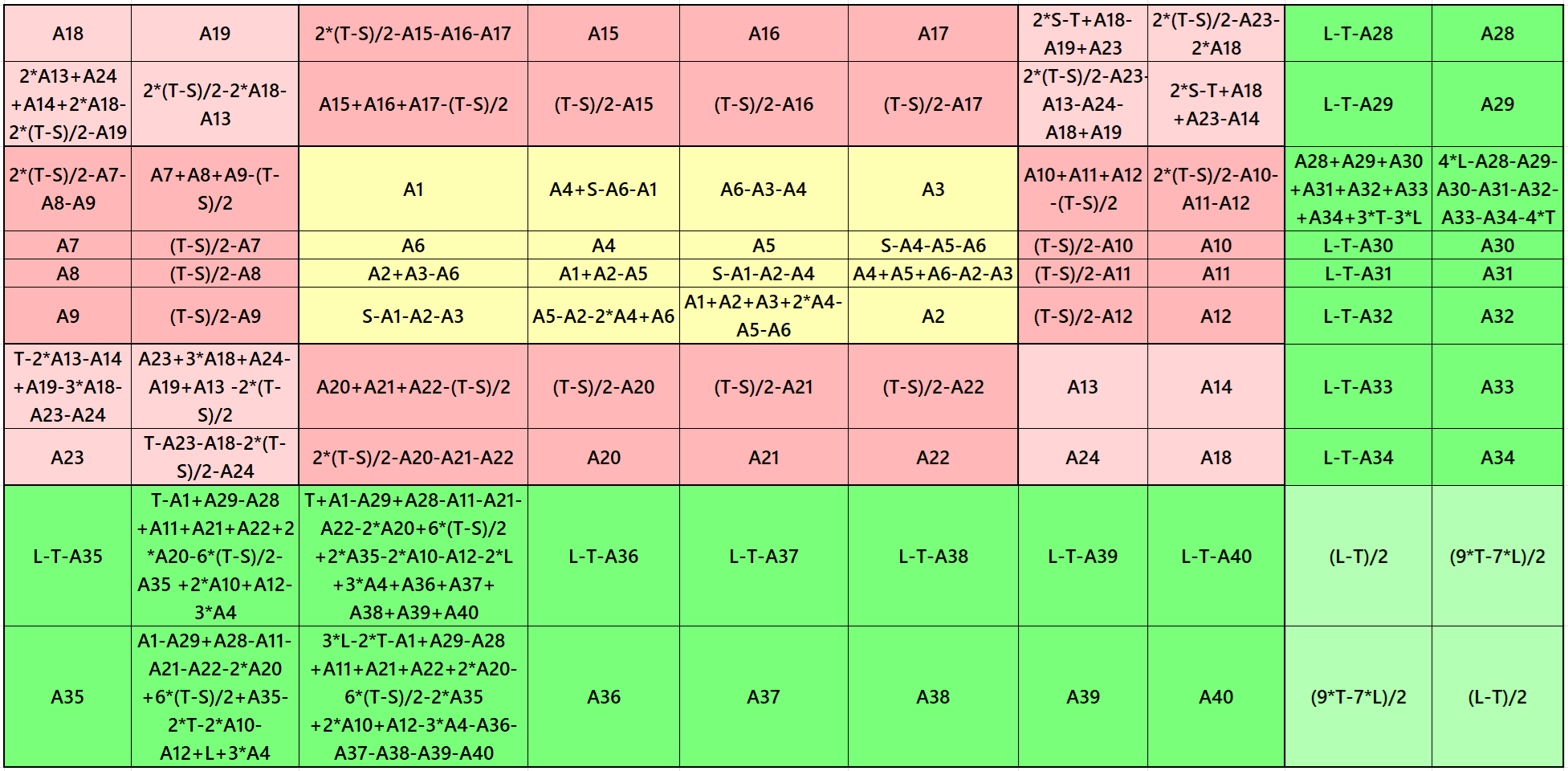
It is a cornered magic square of order 10 with double-digit bordered magic square of order 8 with magic square of order 4 in the middle. The four magic rectangles of orders 2×4 are of equal width and length. Also the two magic rectangles of orders 2×8 are of equal width and length. The letters M, T and L represents the magic squares of orders 4, 8 and 10 respectively. In order to avoid decimal entries, the magic sums M, T and L should be of same type, i.e., either even or odd. See below two examples with even and odd magic sums:

Result 3: Cornered Magic Square
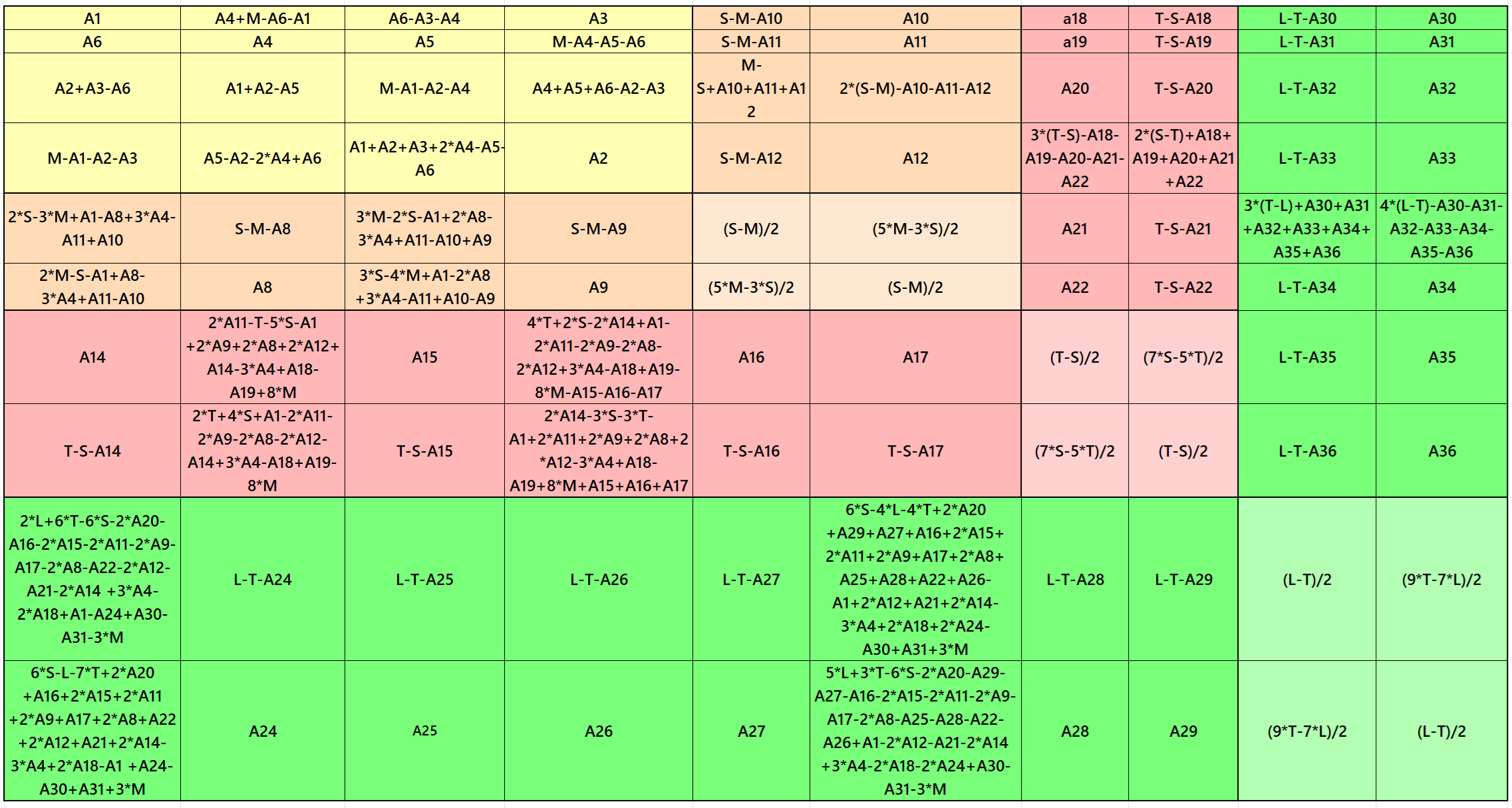
It is a cornered magic square of order 10 having the magic squares of orders 6 and 8 also cornered magic squares. The two magic rectangles of orders 2×4, 2×6 and 2×8 are of equal width and length in each case. The letters M, S, T and L represents the magic squares of orders 4, 6, 8 and 10 respectively. In order to avoid decimal entries, the magic sums M, S, T and L should be of same type, i.e., either even or odd numbers. See below two examples with even and odd magic sums:

Result 4: Cornered Magic Square
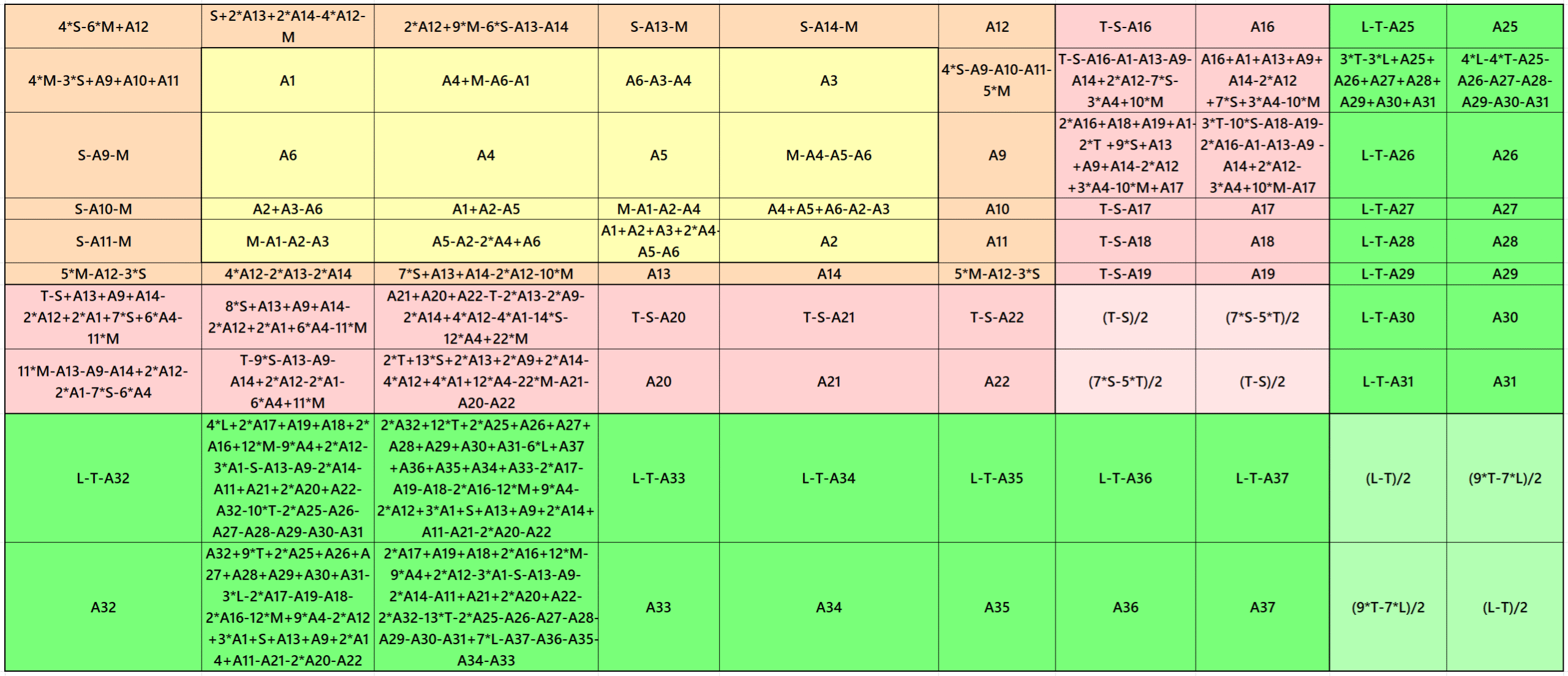
It is also a cornered magic square of order 10 with single-digit bordered magic square of order 6 at the upper left corner containing magic square of order 4. The magic rectangles of orders 2×6 and 2×8 are of equal width and length in each case. The letters M, S, T and L represents the magic squares of orders 4, 6, 8 and 10 respectively. In order to avoid decimal entries, the magic sums M, S, T and L should be of same type, i.e., either even or odd numbers. See below two examples with even and odd magic sums:

Result 5: Cornered Magic Square
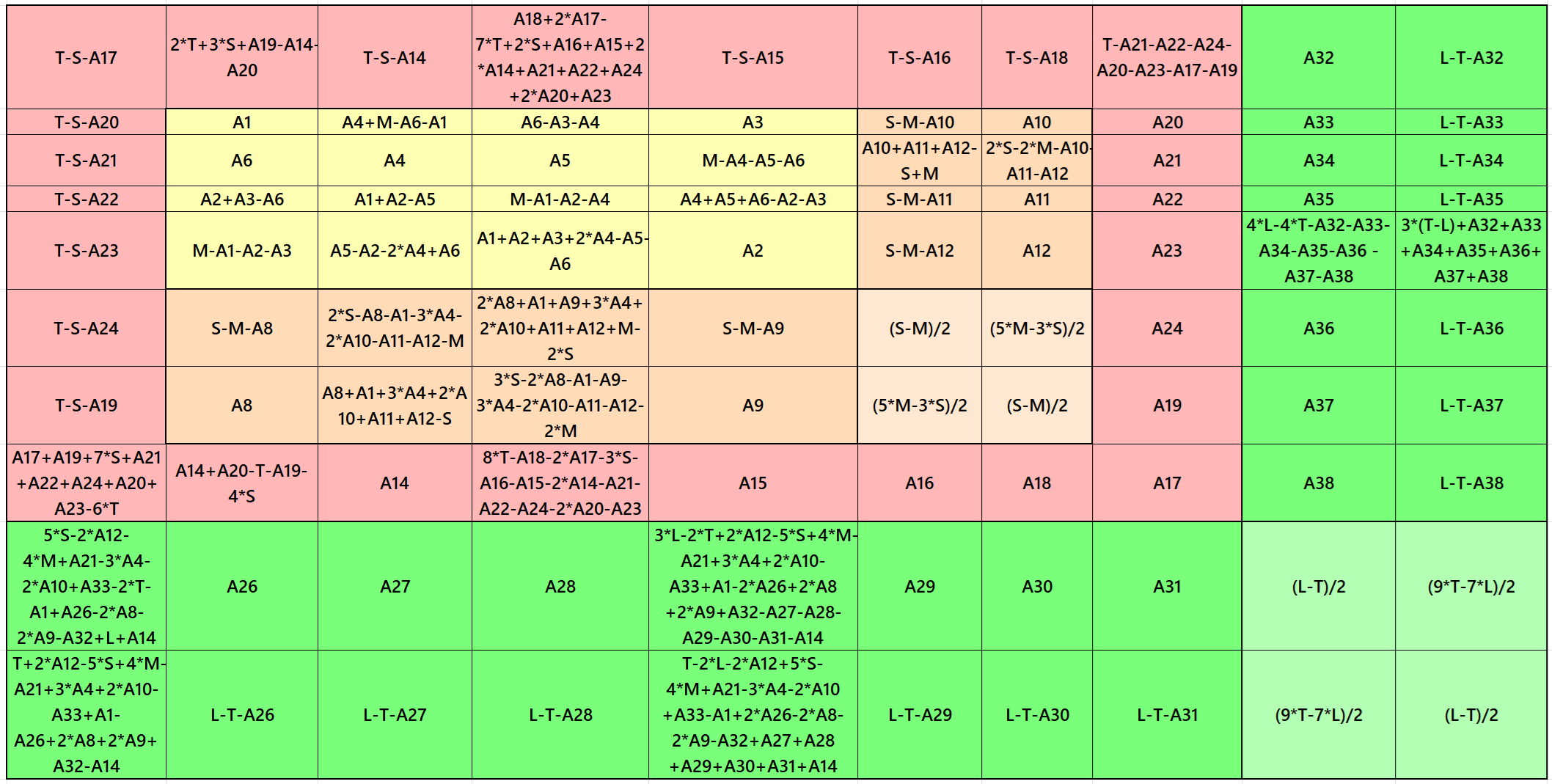
It is also a cornered magic square of order 10 with single-digit bordered magic square of order 8 at the upper left corner. The inner part is again a cornered magic square of order 6 embedded with magic square of order 4. The magic rectangles of orders 2×4 and 2×8 are of equal width and length in each case. The letters M, S, T and L represents the magic squares of orders 4, 6, 8 and 10 respectively. In order to avoid decimal entries, the magic sums pairs (M, S) and (T, L) should be of same type, i.e., either even or odd numbers. See below two examples with even and odd magic sums:

Result 6: Cornered Magic Square
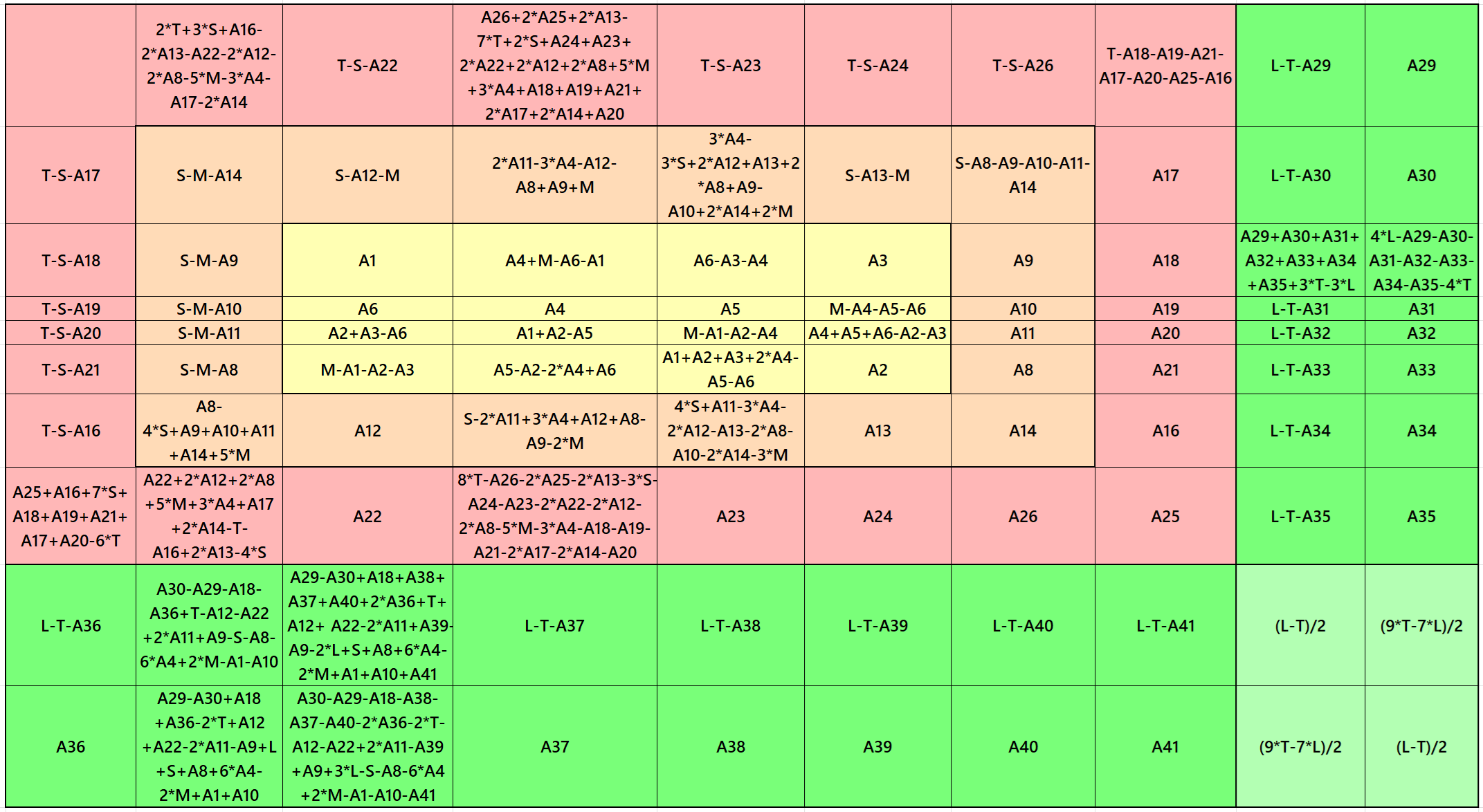
It is also a cornered magic square of order 10 with single-digit bordered magic square of order 8 at the upper left corner. The inner part is magic square of order 4. The magic rectangles of order 2×8 are of equal width and length in each case. The letters M, S, T and L represents the magic squares of orders 4, 6, 8 and 10 respectively. In order to avoid decimal entries, the magic sums pairs (T, L) should be of same type, i.e., either even or odd numbers. See below two examples with even and odd magic sums:

Result 7: Cornered Magic Square
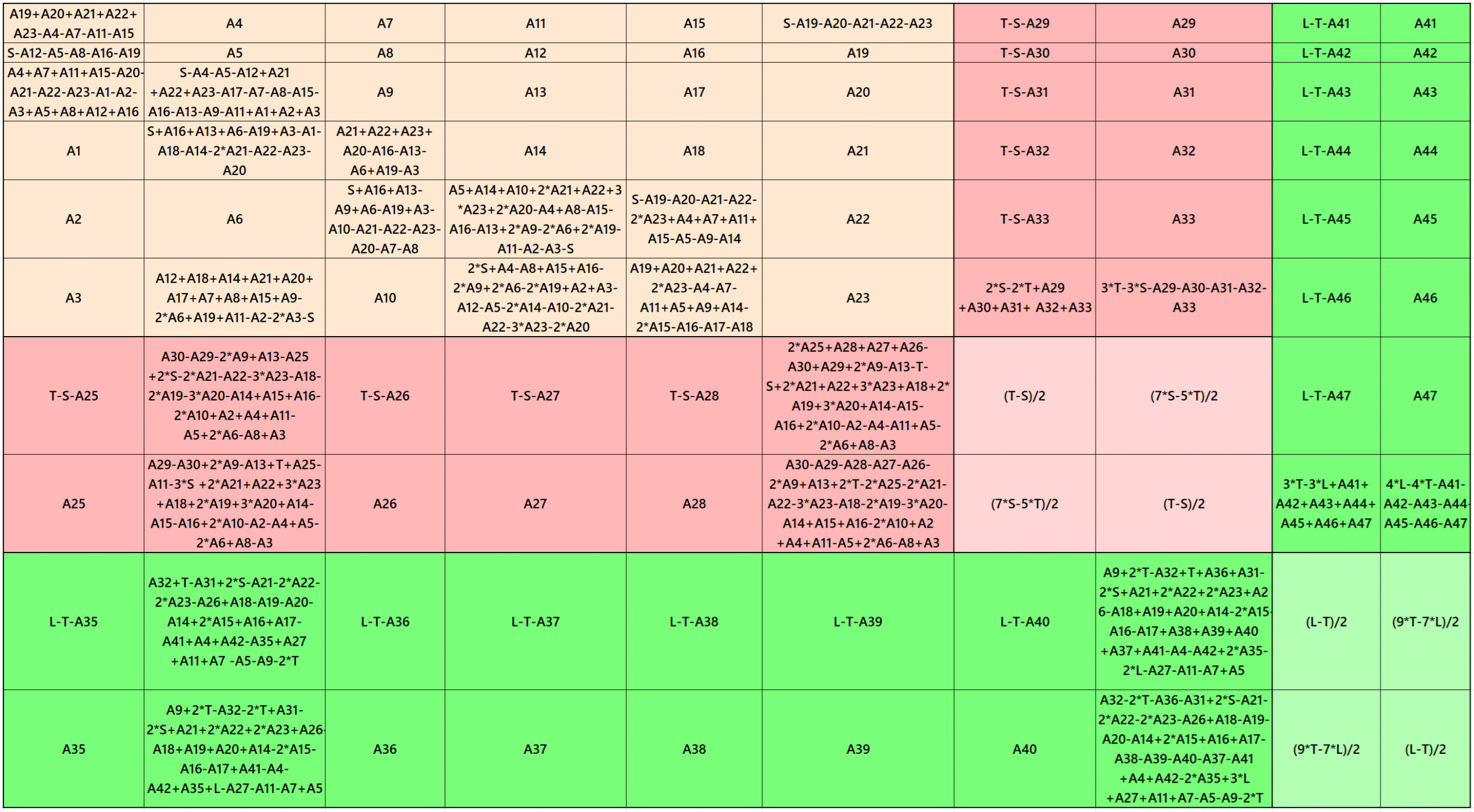
It is also a cornered magic square of order 10 with magic square of order 6 at the upper left corner It includes magic square order 8 also as a cornered magic square . The magic rectangles of order 2×6 and 2×8 are of equal width and length in each case. The letters S, T and L represents the magic squares of orders 6, 8 and 10 respectively. In order to avoid decimal entries, the magic sums pairs (T, L) and (S, T) should be of same type, i.e., either even or odd numbers. See below two examples with even and odd magic sums:

Result 8: Cornered Magic Square
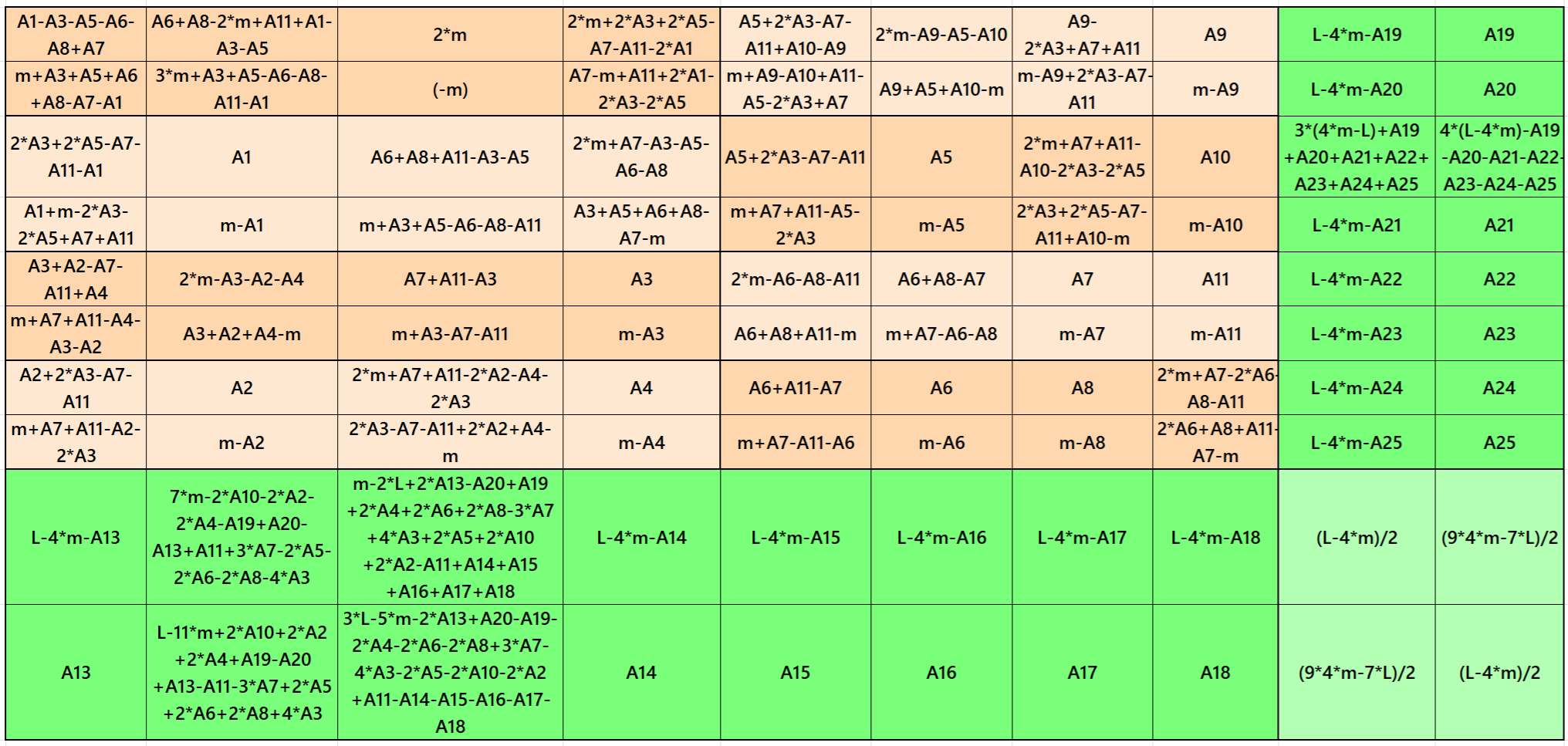
It is also a cornered magic square of order 10 with striped magic square of order 8 at the upper left corner. The letters T and L represents the magic squares of orders 8 and 10 respectively. Here the magic sum of order 8 is always an even numbers. To get the integer entries, the magic sum of order 10 should also be an even number, otherwise some of the entries may be decimal numbers. See below two examples with even and odd magic sums. The second example is with decimal entries.

Result 9: Cornered Magic Square
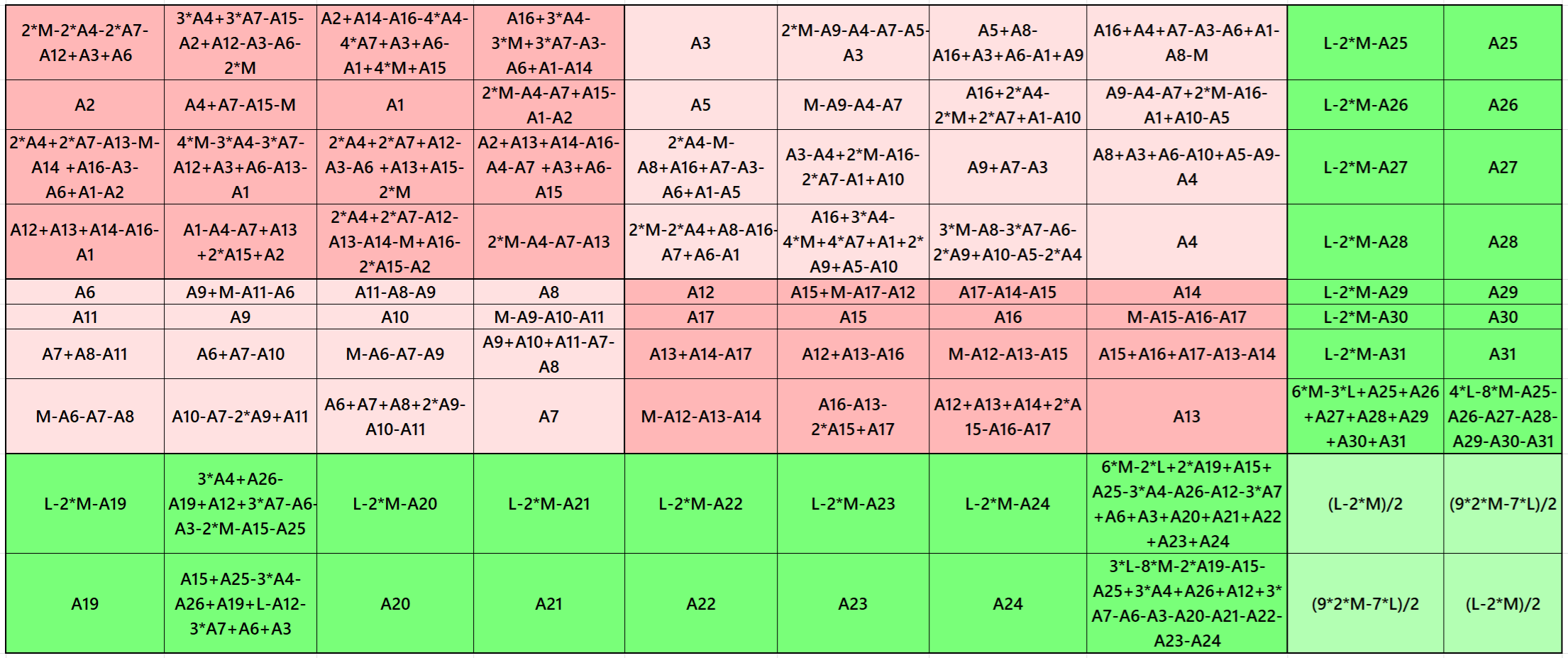
It is also a cornered magic square of order 10 with pandiagonal magic square of order 8 at the left-upper corner. The letters T and L represents the magic squares of orders 8 and 10 respectively. The magic sum of order 8 is always an even numbers as it is formed by four equal sums magic squares of order 4. To get the integer entries, the magic sum of order 10 should also be an even number, otherwise some of the entries may be decimal numbers. See below two examples with even and odd magic sums. The second example is with decimal entries.

Result 10: Double-Digit Bordered Magic Square

It is a double-digit bordered magic square of order 10 with a magic square of order 6. It contains four equal sums semi-magic square of order 3. The letters L, S and M represents the magic squares of orders 10, 6 and 3 respectively. See the examples below:

Result 11: Double-Digit Bordered Magic Square

It is a double-digit bordered magic square of order 10 with a magic square of order 6. It contains three magic rectangles of orders 2×6. Sometimes, we call it a striped magic square of order 6. The letters L and S represents the magic squares of orders 10 and 6. m is the width of the magic rectangle of order m × 3m. See the examples below.

Result 12: Cornered Magic Square

It is a cornered magic square of order 10 with magic square of order 8 at the left-upper corner. It again contains a magic square of order 6 at the upper-left corner. This magic square of order 6 is composed of four equal sums semi-magic squares of order 3. The letters L, T, S and M represents the magic squares of orders 10, 8, 6 and 3 respectively. The magic rectangles of orders 2×6 and 2×8 are of equal sums in each case. See the examples below.

Result 13: Cornered Magic Square

It is a cornered magic square of order 10 with magic square of order 8 at the left-upper corner. It again contains a magic square of order 6 at the upper-left corner. This magic square of order 6 is composed of three magic rectangles of orders 2×6. Sometimes we call this magic square of order 6 as striped magic square. The letters L, T and S represents the magic squares of orders 10, 8 and 6 respectively. The magic rectangles of orders 2×6 and 2×8 are of equal sums in each case. See the examples below.

Result 14: Cornered Magic Square

It is a cornered magic square of order 10 with single-digit bordered magic square of order 8 at the upper-left corner. It contains magic square of order 6 in the inner part. This magic square of order 6 is composed of 4 equal sums semi-magic squares of order 3. The letters L, T, S and M represents the magic squares of orders 10, 8, 6 and 3 respectively. See the examples below:

Result 15: Cornered Magic Square

It is a cornered magic square of order 10 with single-digit bordered magic square of order 8 at the left-upper corner. It contains magic square of order 6 in the inner part. This magic square of order 6 is composed of 3 equal sums magic rectangles of order 2×6. The letters L, T and S represents the magic squares of orders 10, 8 and 6 respectively. See the examples below.

Part 2: Reduced Entries Semi-Magic Squares of Order 10
Result 16: Double-Digit Bordered Semi-Magic Square
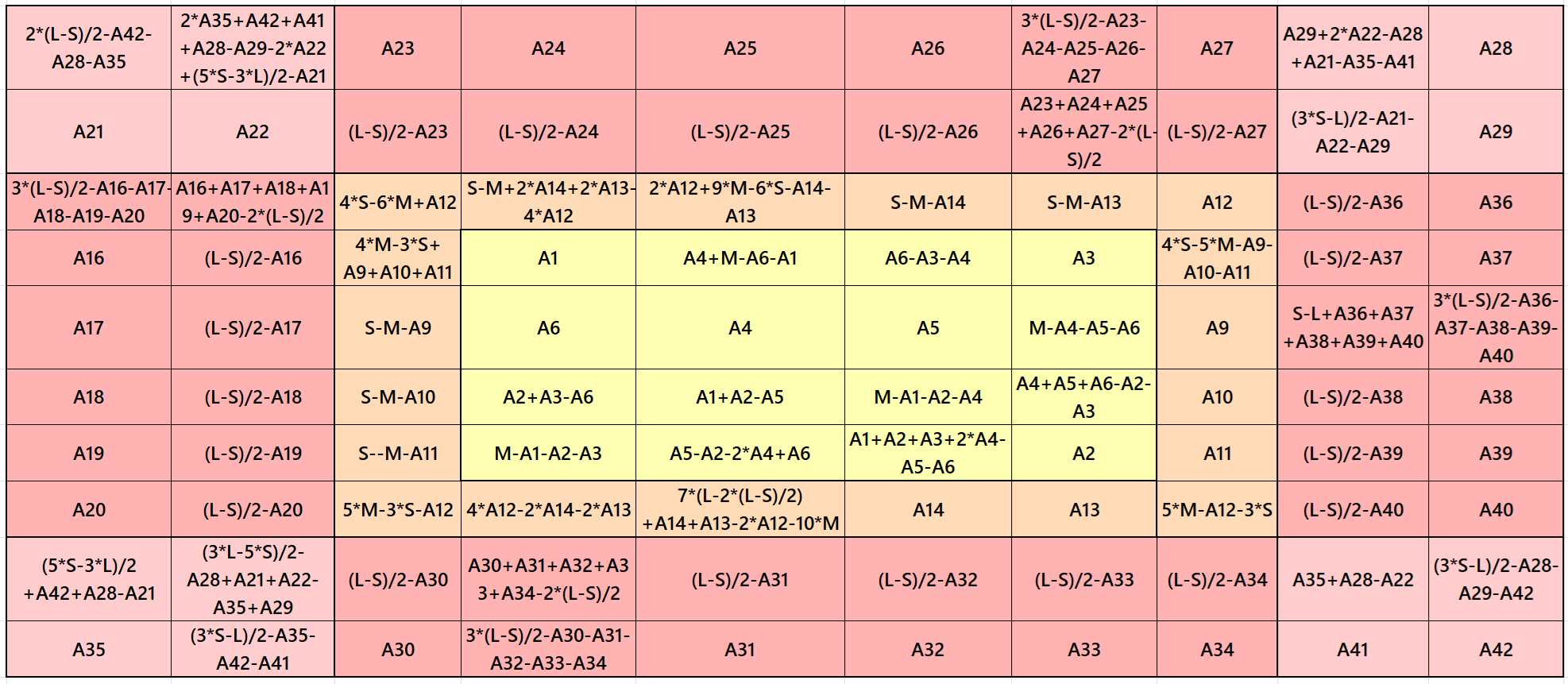
It is a double-digit bordered semi-magic square of order 10 embedded with a single-digit bordered semi-magic squares of orders 6. It is semi-magic only at one diagonal. In order to bring it as a magic square we need a condition, i.e., M=(2/3)*S, where M and S are magic sums of orders 4 and 6 respectively. See below two examples with semi-magic and magic sums. First example is semi-magic square and the second example is is magic square after applying the condition.

Result 17: Single-Digit Bordered Semi-Magic Square
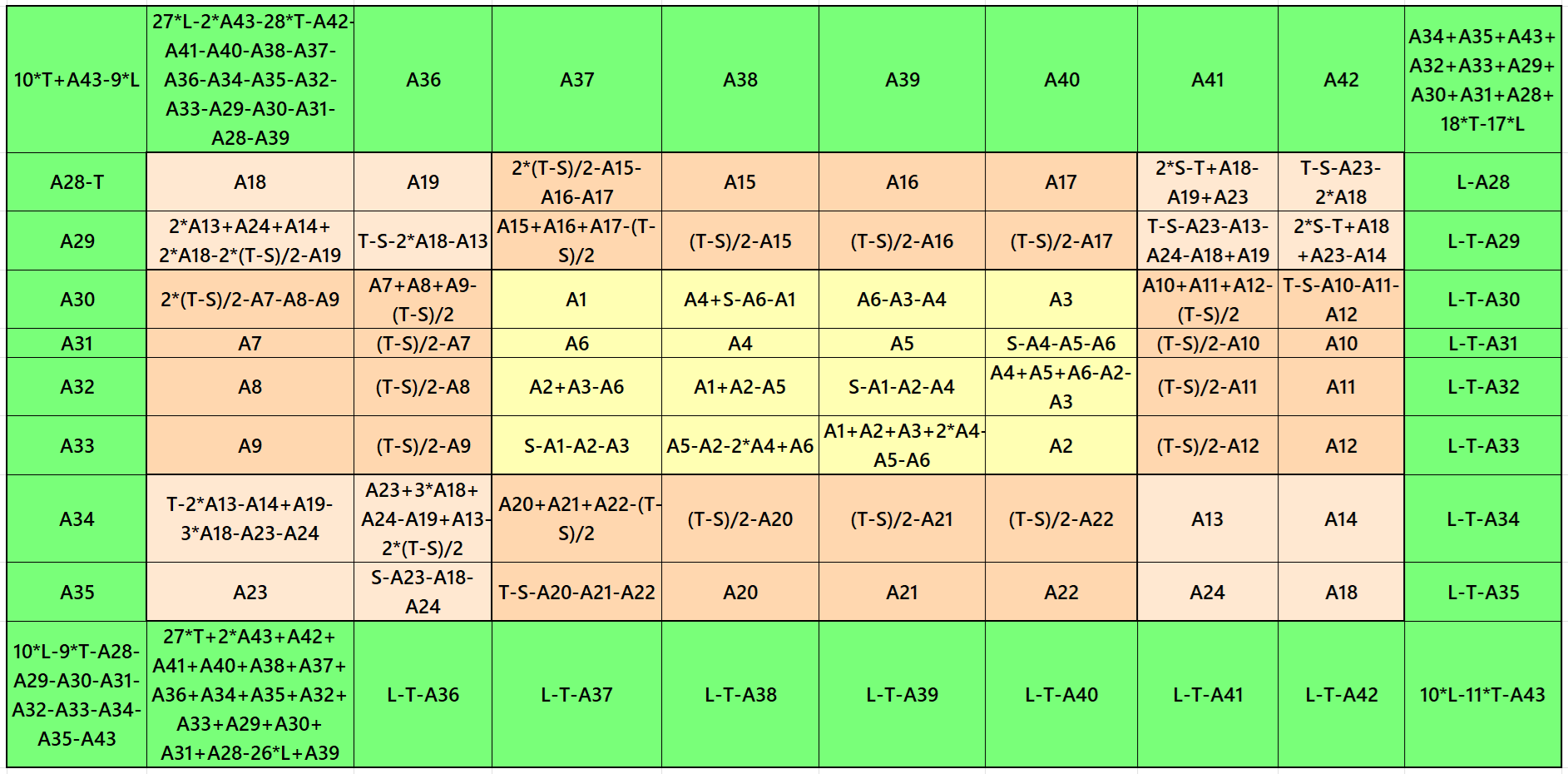
It is a single-digit bordered semi-magic square of order 10 embedded with a double-digit bordered magic square of orders 8 . It is semi-magic only at one diagonal. In order to bring it as a magic square we need some condition a T=(4/5)*L, where T and L are magic sums of orders 8 and 10 respectively. See below two examples with semi-magic and magic sums. First example is semi-magic square and the second example is is magic square after applying the condition.

Result 18: Single-Digit Bordered Semi-Magic Square
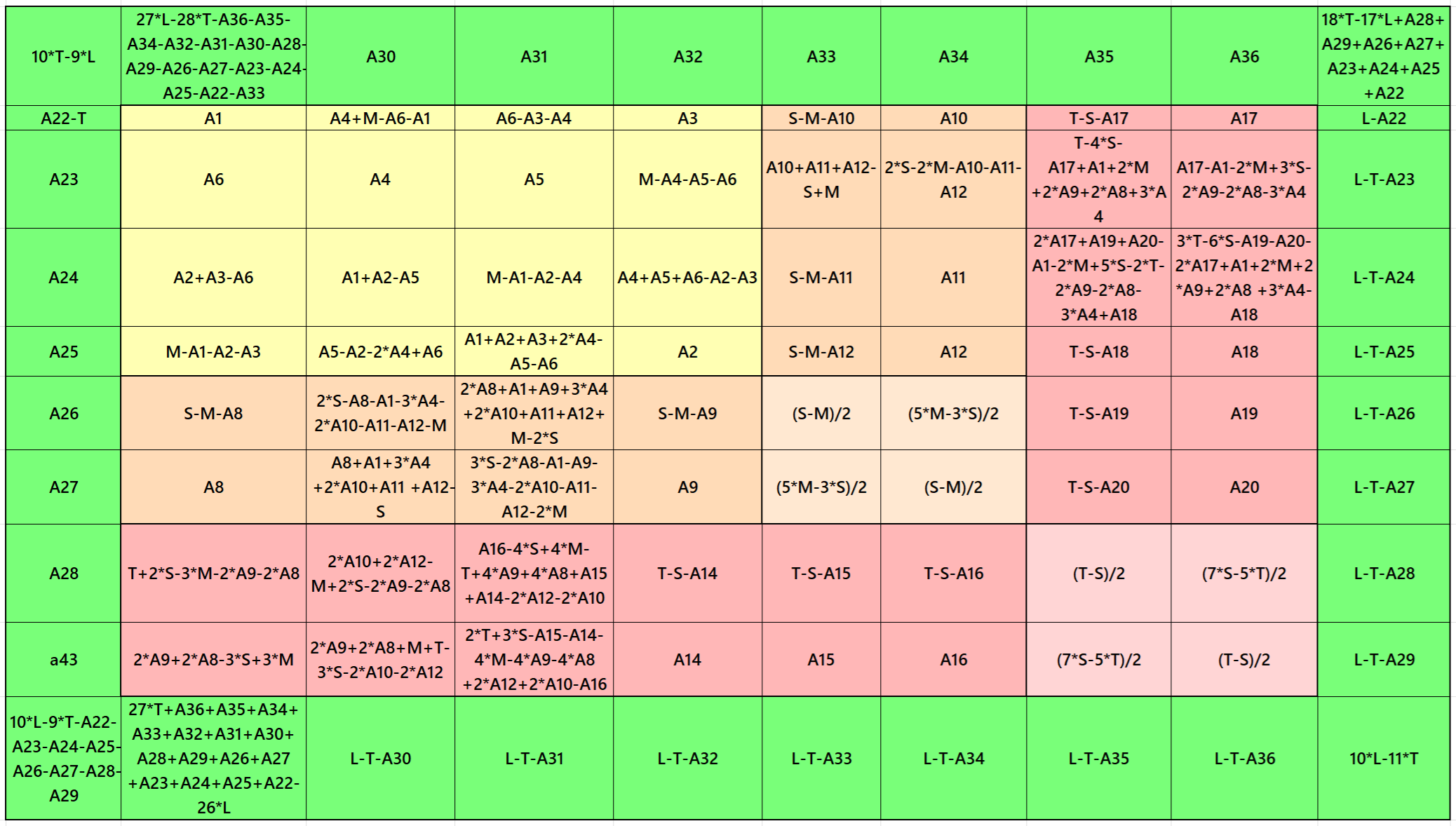
It is a single-digit bordered semi-magic square of order 10 embedded with a cornered magic square of order 8. The inner block is again a cornered magic square of order 6 with magic square of order 4 at the upper-left corner. In order to bring it as a magic square we need a condition T=(4/5)*L, where T and L are magic sums of orders 8 and 10 respectively. See below two examples with semi-magic and magic sums. First example is semi-magic square and the second example is is magic square after applying the conditions.

Result 19: Single-Digit Bordered Semi-Magic Square
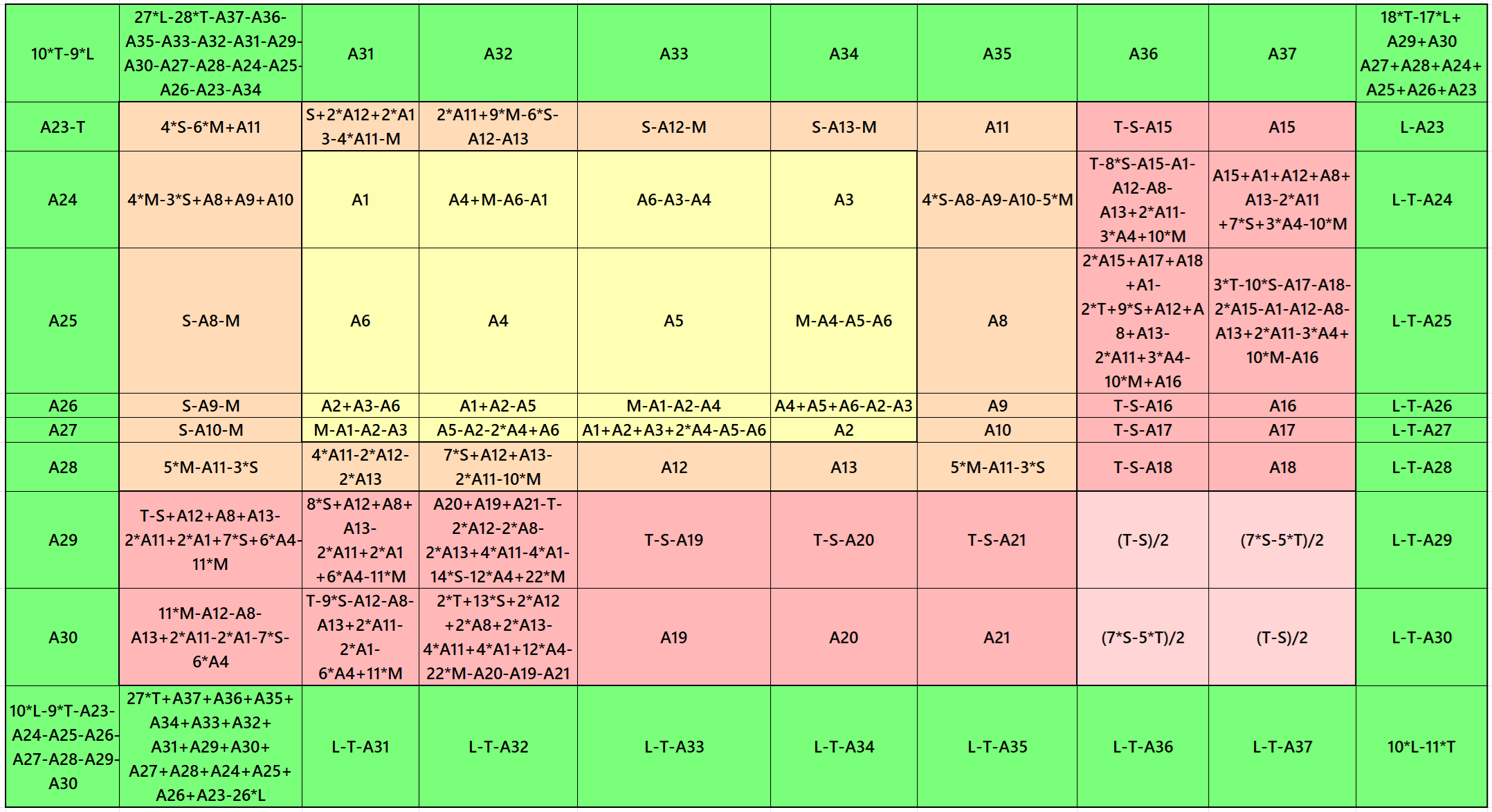
It is a single-digit bordered semi-magic square of order 10 embedded with cornered magic square of order 8. The inner block is again a single-digit bordered magic square of order 6 with magic square of order 4 at the middle. In order to bring it a magic square we need a condition T=(4/5)*L, where T and L are magic sums of orders 8 and 10 respectively. See below two examples with semi-magic and magic sums. First example is semi-magic square and the second example is is magic square after applying the condition.

Result 20: Single-Digit Bordered Semi-Magic Square
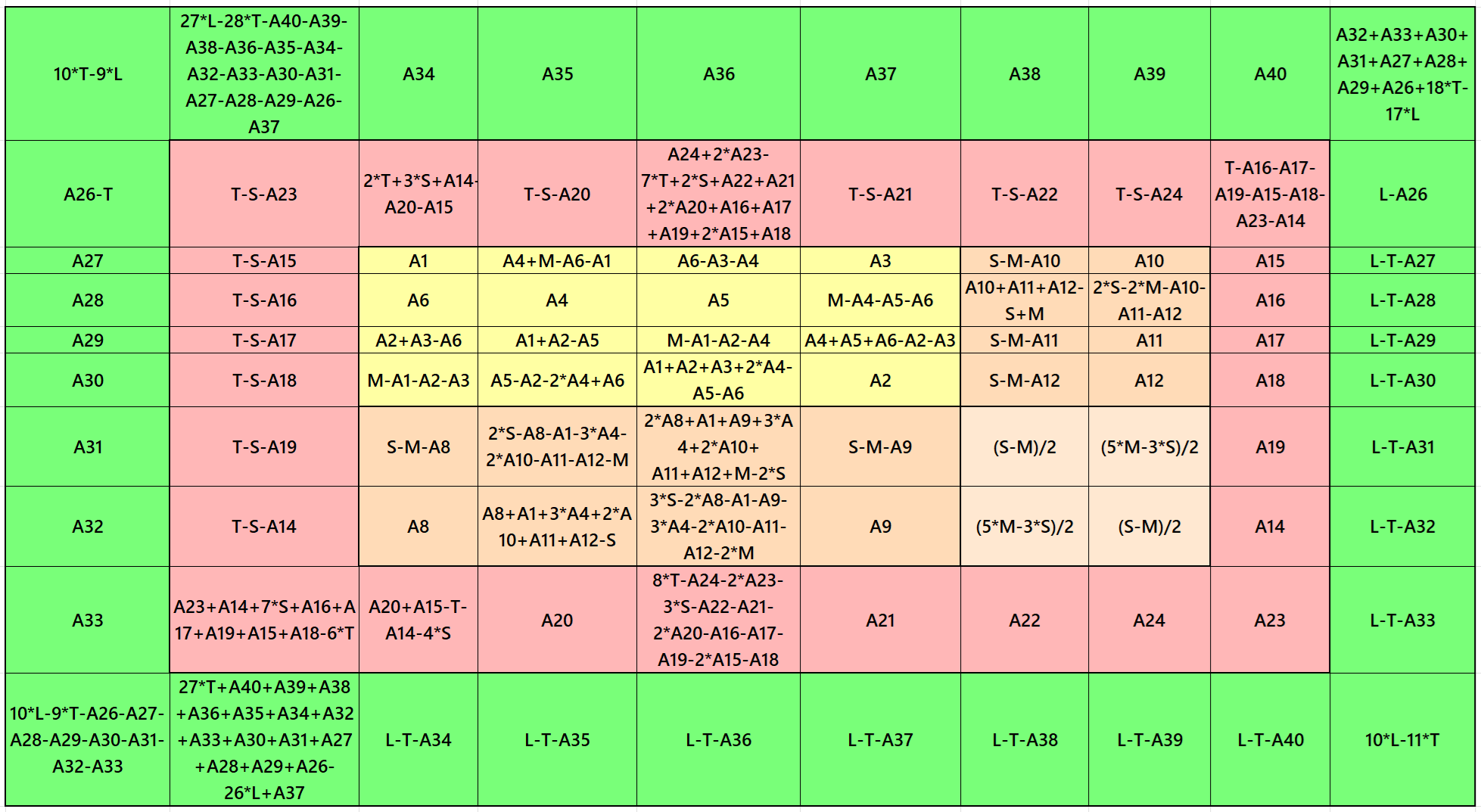
It is a single-digit bordered semi-magic square of order 10 embedded with cornered magic square of order 6. These are semi-magic at one diagonal. In order to bring it as a magic square we need two conditions T=(4/5)*L and S=(3/4)*T, where M, S, T and L are magic sums of orders 4, 6, 8 and 10 respectively. See below two examples with semi-magic and magic sums. First example is semi-magic square and the second example is is magic square after applying the conditions.

Result 21: Single-Digit Bordered Semi-Magic Square
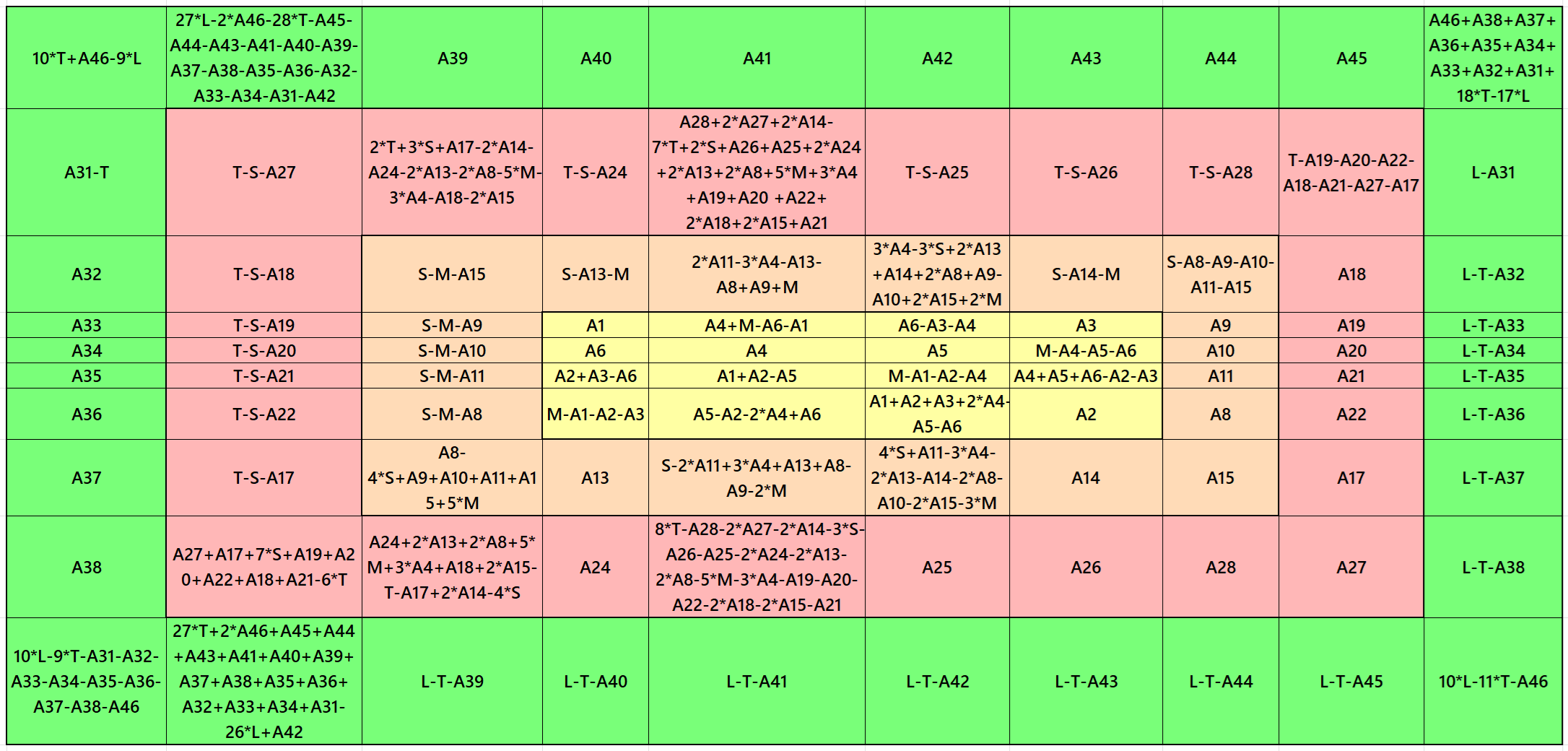
It is a single-digit bordered semi-magic square of order 10 embedded with magic squares of orders 4, 6 and 8. These are semi-magic only at one diagonal. In order to bring it as a magic square we need three conditions T=(4/5)*L, S=(3/4)*T and M=(2/3)*S where M, S, T and L are magic sums of orders 4, 6, 8 and 10 respectively. See below two examples with semi-magic and magic sums. First example is semi-magic square and the second example is is magic square after applying the condition.

Result 22: Single-Digit Bordered Semi-Magic Square
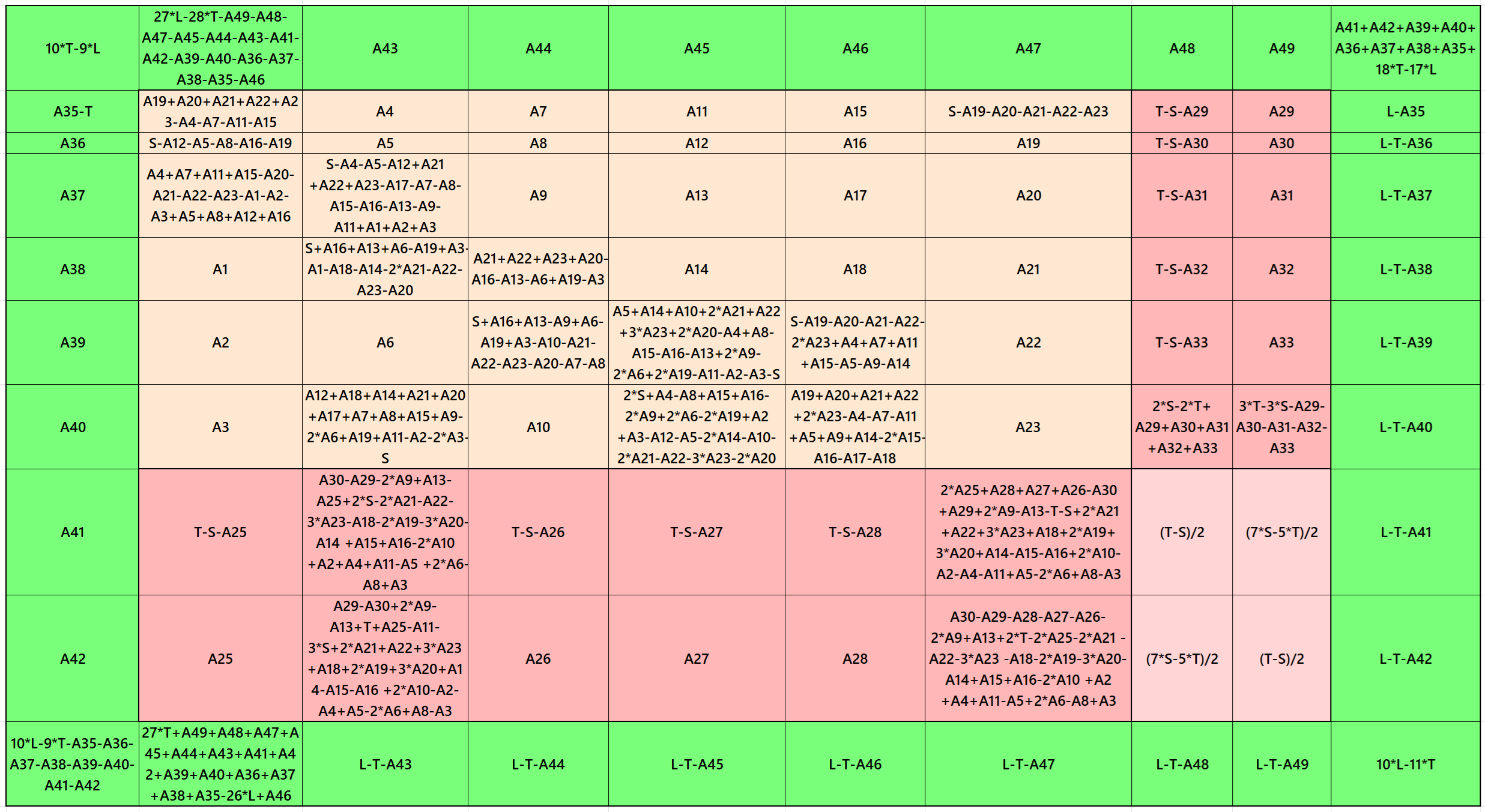
It is a single-digit bordered semi-magic square of order 10 embedded with a cornered magic squares of orders 8 containing magic square of order 6 at the upper-left corner. These are semi-magic only at one diagonal. In order to bring it a magic square we need a condition T=(4/5)*L, where T and L are magic sums of orders 8 and 10 respectively. See below two examples with semi-magic and magic sums. First example is semi-magic square and the second example is is magic square after applying the condition.

Result 23: Single-Digit Bordered Semi-Magic Square
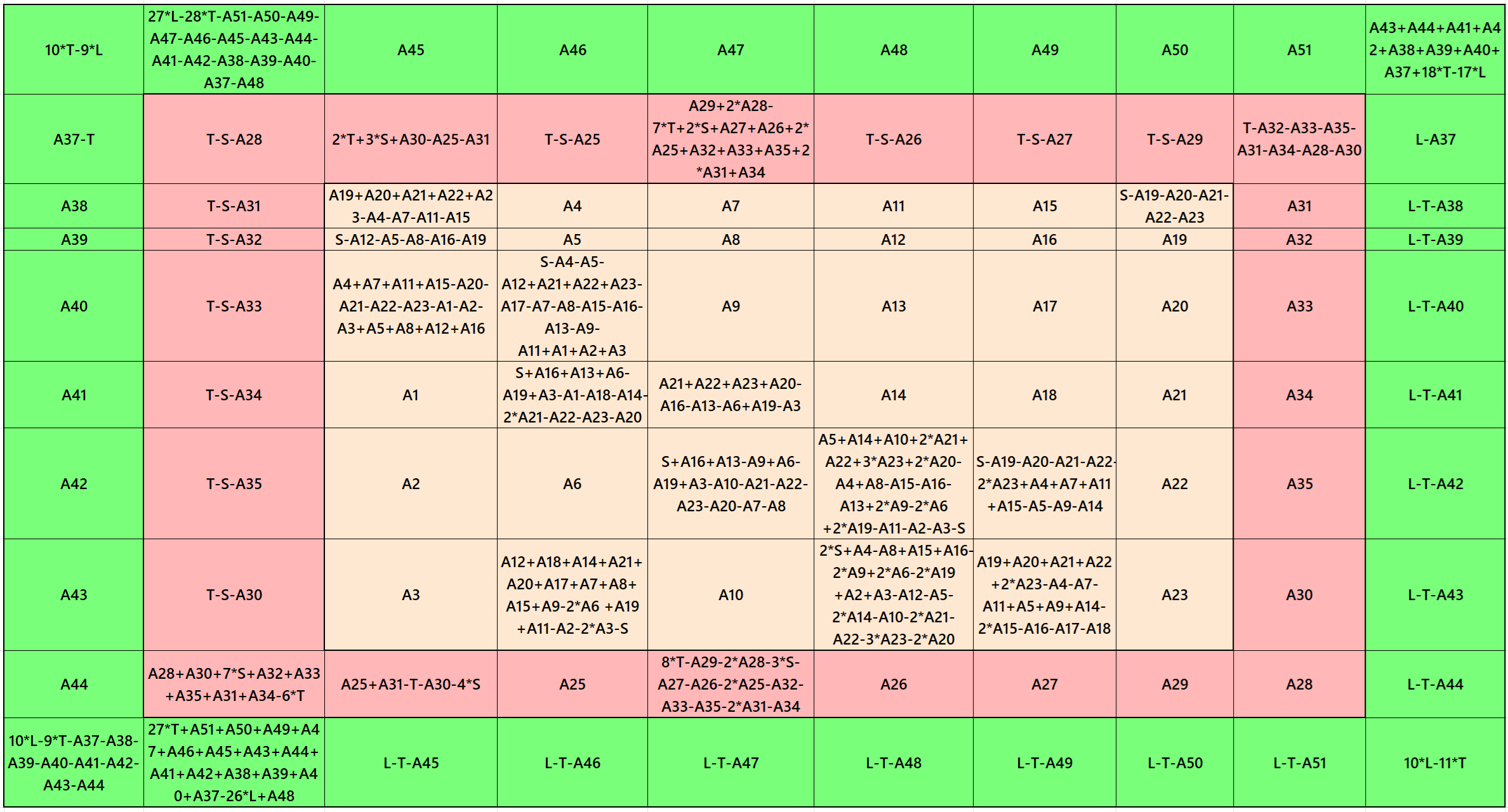
It is a single-digit bordered semi-magic square of order 10 embedded with a magic squares of orders 6. It is semi-magic only at one diagonal. In order to bring it a magic square we need two condition T=(4/5)*L and S=(3/4)*T, where S, T and L are magic sums of orders 6, 8 and 10 respectively. See below two examples with semi-magic and magic sums. First example is semi-magic square and the second example is is magic square after applying the conditions.

Result 24: Single-Digit Bordered Semi-Magic Square
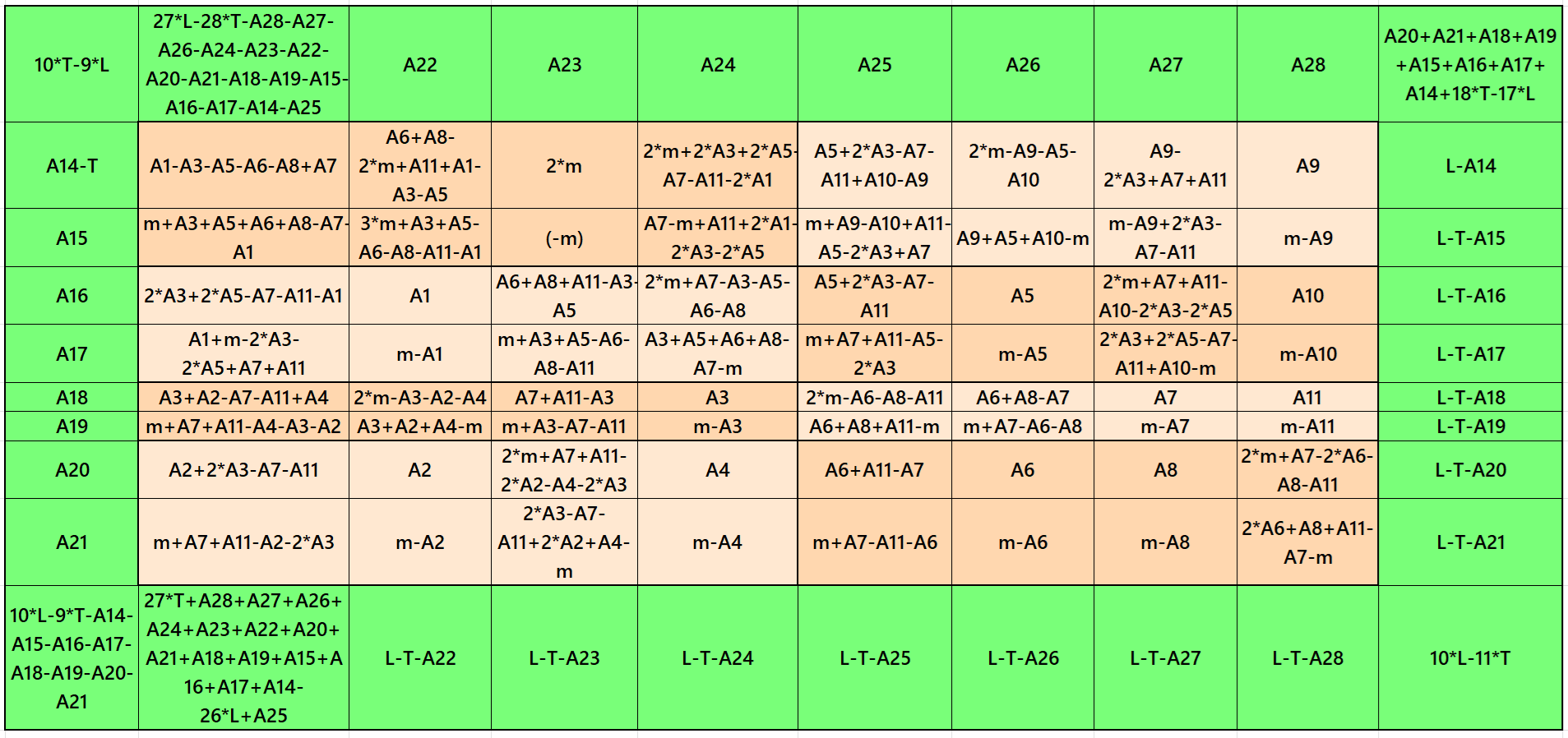
It is a single-digit bordered semi-magic square of order 10 embedded with a striped magic square of order 8. It is semi-magic only at one diagonal. In order to bring it a magic square we need a condition T=(4/5)*L, where T and L are magic sums of orders 8 and 10 respectively. See below two examples with semi-magic and magic sums. See below two examples. First example is semi-magic square and the second example is is magic square after applying the condition.

Result 25: Single-Digit Bordered Semi-Magic Square
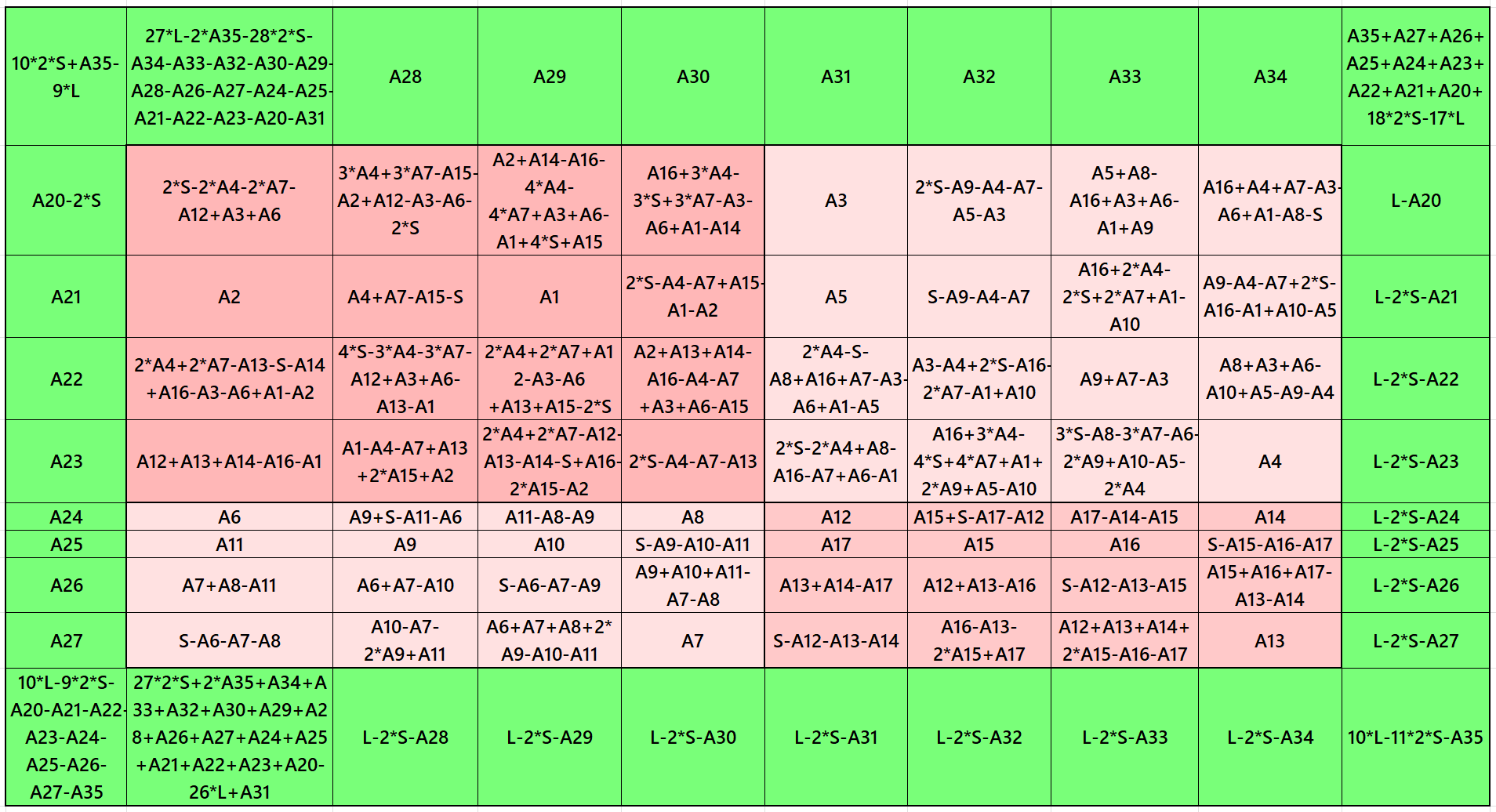
It is a single-digit bordered semi-magic square of order 10 embedded with a pandiagonal magic square of order 8 divided in four equal sums magic squares of order 4. It is semi-magic only at one diagonal. In order to bring it a magic square we need a condition T=(4/5)*L, where T and L are magic sums of orders 8 and 10 respectively. See below two examples with semi-magic and magic sums. See below two examples. First example is semi-magic square and the second example is is magic square after applying the condition.

Result 26: Single-Digit Bordered Semi-Magic Square

It is a single-digit bordered semi-magic square of order 10 embedded with a cornered magic square of order 8. It contains magic square of order 6 at the upper-left corner. This magic square of order 6 is composed of four equal sums semi-magic squares of order 3. In order to bring it as a magic square we need a condition T:=(4/5)*L. The letters L, T, S and M represents magic squares of orders 10, 8, 6 and 3. See below two examples. First example is semi-magic square and the second example is is magic square after applying the condition.

Result 27: Single-Digit Bordered Semi-Magic Square

It is a single-digit bordered semi-magic square of order 10 embedded with a cornered magic square of order 8. It contains magic square of order 6 at the upper-left corner. This magic square of order 6 is composed of three magic rectangles of order 2×6 of equal sums. In order to bring it as a magic square we need a condition T:=(4/5)*L. The letters L, T and S represents magic squares of orders 10, 8 and 6 respectively. The letter m represents the width of magic rectangle of order m×3m. See below two examples. First example is semi-magic square and the second example is is magic square after applying the condition.

Result 28: Single-Digit Bordered Semi-Magic Square

It is a single-digit bordered semi-magic square of order 10 and 8 embedded with a magic square of order 6. This magic square of order 6 is composed of four equal sums semi-magic squares of order 3. In order to bring it as a magic square we need two conditions T:=(4/5)*L and S:=(3/4)*T. The letters L, T, S and M represents magic squares of orders 10, 8, 6 and 3. See below two examples. First example is semi-magic square and the second example is is magic square after applying the conditions.

Result 29: Single-Digit Bordered Semi-Magic Square

It is a single-digit bordered semi-magic square of order 10 and 8 embedded with a magic square of order 6. This magic square of order 6 is composed of three equal sums magic rectangles of order 2×6. In order to bring it as a magic square we need two conditions T:=(4/5)*L and S:=(3/4)*T. The letters L, T and S represents magic squares of orders 10, 8 and 6. The letter m represents the width of magic rectangle of order m×3m. See below two examples. First example is semi-magic square and the second example is is magic square after applying the conditions.

References
Part 1: Representing Days and Date
- Inder J. Taneja, Magic Squares of Orders 3 to 7 in Representing Dates and Days of the Year 2025, Zenodo, May 04, 2025, pp. 1-474, https://doi.org/10.5281/zenodo.15338142.
- Site Link: Magic Squares of Orders 3 to 7 Representing Dates and Days of the Year 2025 (new site)
- Site Link: Magic Squares of Orders 3 to 7 Representing Dates and Days of the Year 2025 (old site)
- Inder J. Taneja, Magic Squares of Order 8 Representing Days and Dates of the Year 2025, Zenodo, May 04, 2025, pp. 1-134, https://doi.org/10.5281/zenodo.15338246.
- Site Link: Magic Squares of Order 8 Representing Days and Dates of the Year 2025 (new site)
- Site Link: Magic Squares of Order 8 Representing Days and Dates of the Year 2025 (old site)
- Inder J. Taneja, Magic Squares of Order 9 Representing Days and Dates of the Year 2025, Zenodo, May 09, 2025, pp. 1-132, https://doi.org/10.5281/zenodo.15375349.
- Site Link: Magic Squares of Order 9 Representing Days and Dates of the Year 2025 (new site)
- Site Link: Magic Squares of Order 9 Representing Days and Dates of the Year 2025 (old site)
- Inder J. Taneja, Magic Squares of Order 11 Representing Days and Dates of the Year 2025, Zenodo, May 31, 2025, pp. 1-94, https://doi.org/10.5281/zenodo.15564676
- Inder J. Taneja, Magic Squares of Order 12 Representing Days and Dates of the Year 2025 Zenodo, June 10, 2025, pp. 1-43, https://doi.org/10.5281/zenodo.15631884.
Part 2: Revised with Examples
- Inder J. Taneja, Reduced Entries Magic and Semi-Magic Squares of order 12, Zenodo, June 18, 2025, pp. 1-57, https://doi.org/10.5281/zenodo.15692014.
- Inder J. Taneja, Reduced Entries Magic and Semi-Magic Squares of Orders 3, 5, 7 and 9, Zenodo, July 01, 2025, pp. 1-65, https://doi.org/10.5281/zenodo.15783321.
- Inder J. Taneja, Reduced Entries Magic and Semi-Magic Squares of Orders 4, 6, 8 and 10, Zenodo, July 05, 2025, pp. 1-85, https://doi.org/10.5281/zenodo.15814675.
- Inder J. Taneja, Reduced Entries Algebraic Pandiagonal Magic Squares of Orders 4 to 8, Zenodo, August 12, 2025, pp. 1-63, https://doi.org/10.5281/zenodo.16809756.
- Inder J. Taneja, Self-Made Algebraic Magic, Semi-Magic and Pandiagonal Magic Squares of Order 9, Zenodo, August 27, 2025, pp. 1-92, https://doi.org/10.5281/zenodo.16955571.
- Inder J. Taneja, Self-Made Algebraic Magic, Semi-Magic and Pandiagonal Magic Squares of Order 10, Zenodo, September 18, 2025, pp. 1-112, https://doi.org/10.5281/zenodo.17149185
- Site Link: Self-Made Algebraic Magic, Semi-Magic and Pandiagonal Magic Squares of Order 10 (new site)
- Site Link: Self-Made Algebraic Magic, Semi-Magic and Pandiagonal Magic Squares of Order 10 (old site)







